




6 The Making of Makers
Jodi Pluznik
The Maker Movement has made the move to Gilman.
18 Emotional Intelligence
David Brewster ’79 encourages students to strengthen their emotional intelligence through expanding their visual literacy.
20 Finney-Greene Scholars Program

A new program named in honor of Redmond C. S. Finney ’47 and William Greene enables the School to provide young men from traditionally underrepresented backgrounds additional support throughout their Gilman journey.

61 In Memoriam
Ralph L. DeGroff, Jr. ’54; John Merrill.
66 Founders Day 2018
24 Archives
The Walter Lord collection.
26 School News

Environmental sustainability class studies issues relating to population, food, water, and energy; eight Ivy League college acceptances for Mekhi Johnson ’18; Blue Gray 2017.
32 Alumni
Alumni Association gatherings connect graduates to each other and the School.
43 Athletics
Updates on Gilman’s interscholastic sports; Lori Bristow and Russell Wrenn ’96 named athletic directors; Thomas Booker ’18 wins Scholar Athlete Award.

56 Development
First Things First campaign launches; Ad Astra Society asks graduates of the last 15 years to reach for the stars.
When discussing the role of education in today’s world, a good friend and I—both washed-up history teachers—like to remark that YouTube can out-lecture us in pretty much any topic we might be trying to teach our students. No matter how much I may have learned about my subject matter, my students can find more (and often better) information through modern technologies. Indeed, we have a fantastic ability today to hear from experts in every imaginable field with the click of a button or the tap of a finger. If this assertion is true, what is the role of the teacher in helping students learn? What is the function of a school? Does this information age in which we all have greater access to more collective knowledge than ever before make teachers and schools obsolete?
Far from it. First of all, even with so much information at our fingertips, knowledge acquisition and retention are critical outcomes of a good education. Teachers still have information and wisdom to share, and they also must help guide students through an increasingly complex and confusing body of knowledge available to us all. This latter role speaks to the grander charge of teachers: helping students to make meaning of the world. Having knowledge is a very good thing; making meaning of it and putting it to good use are even better.
How to make meaning is a wonderful challenge. In some cases, it simply means wrestling with ideas so that they make more sense to us and so that we can apply them to
our own ways of thinking. It also means making stuff. If we know that people—boys, in particular—learn by doing, we also know that a great way to do something is to make something. Through the process of making things, we apply knowledge and skills, we think critically, we correct mistakes, and we solve problems. In short, we learn, and teachers guide that process.
This issue of the Bulletin features Gilman boys’ opportunities to become makers. In the pages that follow, you will see how, through the guidance of teachers, students are taking advantage of new spaces and resources designed to promote learning through creating. You will also read about Gilman alumni whose creative works help to shape our world and give meaning to it. As always, you will also be able to catch up with campus life and alumni activity across the country. In addition to the content, we hope you enjoy the Bulletin’s new look!
Wherever this edition finds you, we wish you all the best from Roland Avenue. May you all find ways to make meaning.
Sincerely,
 Henry P. A. Smyth Headmaster
Henry P. A. Smyth Headmaster

GILMAN’S MAKERSPACES INTEND TO GIVE BOYS THE VISUAL, SPATIAL, CREATIVE, AND TECHNOLOGICAL SKILLS TO APPLY LEARNING AND CONFRONT CHALLENGES WITH CONFIDENCE.
Jodi Pluznik Graduates of a certain generation may remember Ned Clapp’s “geography mecca” on the second floor of the Middle School building. Legend recalls that Mr. Clapp claimed the space as his when John M. T. Finney Hall opened in 1994 because it was the largest interior classroom, and he liked the skylight.
Nearly a quarter-century later, Mr. Clapp’s classroom is transformed into the Innovation Lab, a mecca of another sort.
Opened just over one year ago, in January 2017, the Innovation Lab is a technological hub of sixth, seventh, and eighth grade creativity and imagination. The lab boasts six 3D printing machines, a laser
cutting machine, drone technology, Arduinos (an open source electronics platform), “plug and play” circuitry and electronics components, LEGO Mindstorms EV3 robotics, and a 23-foot green-screen wall and soft box lighting for filmmaking. The room is completely modular – all of the tables are on wheels or fold down. The tabletops sport dryerase whiteboard surfaces, as does the room’s entire north wall, which is used for projection and note-taking. (Boys will brainstorm ideas, jot their notes on the tables or wall, then capture a photo with their iPads for future use. And they won’t be reprimanded for writing on the tables.) An overhead system makes electricity available to any area in the room.
Wander by the Innovation Lab midday and, perhaps, boys in either the 3D printing or laser cutting lunch club
are bringing their computer-generated designs to life. Swing by again after school: perhaps the Middle School’s FIRST LEGO League Robotics teams, Robohounds or Gearhounds, are working out their entry for the annual competition (see page 14), in a quest to meet a group of challenges on the standard game board within 2.5 minutes.
Or maybe the MakerTech club is meeting in the space. MakerTech gives boys more latitude beyond the lunch club to explore 3D printing and laser cutting and delve into deeper, individual projects. Boys use Adobe Illustrator to design their projects and then complete them on one of the pieces of machinery. An example: the boys learned how to design and assemble interlocking gears and made racecourses for marbles. They also designed and cut paper bookmarks.


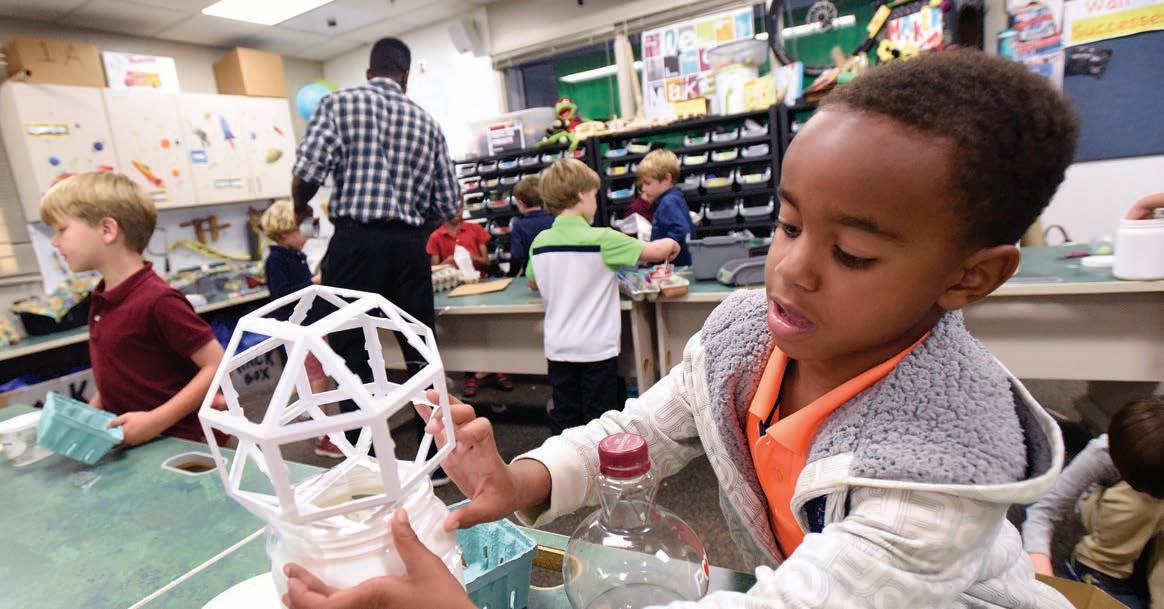


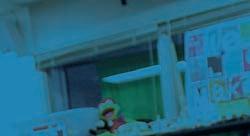
After school, the space may be used for a special club. In the fall, 18 boys finished an eight-week introduction to drones, led by Global Air Media founders Eno Umoh ’04 and Austin Brown ’05. The boys studied engineering, soldering, aerial photography, and FAA guidelines. Each boy built and flew his own drone, which he kept.
During the school day, you might see Lynn Nichols’ Algebra II students making clocks with algebraic equations in each position: the solution to each equation equals the hour position. The boys designed and laser cut the clock faces, then assembled the hands mechanism.
You could catch eighth grade ancient history students demonstrate their classroom learning as they design and laser cut replicas of Roman or Greek edifices and structures, such as mini ballistas, as part of a project that also includes a paper and presentation.
When learning specialist Kim Eddinger realized that some boys work better with handson, tactile tools, she brought them to the Innovation Lab to design their own cubes to help them learn grammar – subjectpronoun agreement, verb conjugation and the like – in whichever language they need.
“We’re looking to create a mindset for both students and faculty that reflects the four tenants on the wall,” Don Abrams, Middle School director of instructional technology says, gesturing behind him: Creativity. Collaboration. Critical Thinking. Communication.
The Maker Movement has made the move to Gilman.
The Maker Movement reached education about a dozen years ago, growing as an extension of efforts to bolster science, technology, engineering, and mathematics (STEM) in curriculum nationwide. The Maker Movement
synthesizes these disciplines into more hands-on, designthinking opportunities for students.
Across Gilman’s three divisions, makerspaces intend to give boys the visual, spatial, creative, and technological skills to apply their learning and confront challenges with confidence.
In the Innovation Lab, as well as the Lower School’s two makerspaces and Upper School science teacher Amy Mussen’s classroom, boys learn to work both independently and collaboratively with each other. The adults in the room, often Don Abrams or Lynn Nichols, the Middle School makerspace team, serve as guides and facilitators.
Abrams describes the teachers as guides, answering students’ questions with questions rather than simply answering, thus leading the boys to tease out the information on their own. Learning is telegraphed: Abrams will teach one boy how to use the laser cutter, for example; that boy, in turn, teaches the next boy.
Encouraging the maker mindset is not only for middle school aged boys. Thanks to a gift from Nancy and Dick Fryberger ’54 intended to help the School create designbased curriculum, in June 2017, a team of teachers and administrators, Director of Technology Tye Campbell, Assistant Head of Lower School Lisa Teeling, Lower School Librarian Faith Ward, Don Abrams, and Amy Mussen, attended ReDesignEDU, a workshop where “practicing teachers learn design thinking by doing design thinking,” with the intent to help build an interdivisional goal for design-based thinking at Gilman.
“WE’RE LOOKING TO CREATE A MINDSET FOR BOTH STUDENTS AND FACULTY THAT REFLECTS THE FOUR TENANTS ON THE WALL: CREATIVITY. COLLABORATION. CRITICAL THINKING. COMMUNICATION.”
DON ABRAMS, MIDDLE SCHOOL DIRECTOR OF INSTRUCTIONAL TECHNOLOGY
The Innovation Lab, created through a generous First Things First campaign gift from Kathy and Roger Novak ’66, is one of the first steps in accomplishing this goal. Enhancing teaching and learning at Gilman is an ongoing School priority. The creation of the Innovation Lab allows the Middle School to provide more technology-based offerings beyond eighth grade electives of filmmaking and solar car construction. The sixth grade technology course has expanded from a quarter-long class designed to learn iPad workflow, educational apps, and basic coding with Apple Swift Playgrounds (an app that teaches coding through creative play) to a yearlong class that meets two days in the 10-day cycle. The expanded class now offers teacher support for the boys from the first day of school throughout the year, and adds robotics and Arduino into the mix. This year of technology lays a foundation for the boys that enables seventh grade math teachers to add coding to the curriculum, bridging together math and science. Boys in enriched pre-algebra study the Python programming language, using the Pythonista app on their iPads, to create text-based programming and explore creative projects.
If there is anyone at Gilman who’s seen it all technologically, it’s Abrams. He’s traveled technology along with the Middle School, from a time when “state-of-the-art,” in 1976, meant a modern language lab with cubicles inherited from the Upper School to a PC computer lab to a 1:1 iPad program to the Innovation Lab to a soon-to-be-revisioned space formerly known as said computer lab.
As the second decade of the 21st century marches toward its close, technology, Abrams says, is not a place where students go, so a lab with rows of computers is not useful in a bringyour-own-device world. The “old” Middle School computer lab will transform into a sister space to the Innovation Lab and become an area that encourages creativity and collaboration. Everything in the room will be portable and mobile, flexible and adaptable. The space will offer boys access to a bit more computing power than their iPads provide by housing a limited number of laptops. In this space, boys will explore 2D computer design, photo editing, animation, and basic coding using Arduino.
THEIR LEARNING AND CONFRONT CHALLENGES WITH CONFIDENCE.
The Middle School, obviously, is at the center of a boy’s Gilman years – in the middle of things, to borrow a phrase from the weekly divisional parent newsletter. Where does that leave boys on the younger and older sides of the middle? How is this sort of learning articulated?
Enter the Lower School MakerSpace and MakerLab.
The MakerSpace is a creator’s paradise, sporting more than 90 bins of stuff – found objects like broken laptops and telephones, wires and wheels, burlap and buttons, pasta and paper, motors and markers – to encourage technology- and engineering-type activities. There’s even a wind tunnel to test how designs hold up.
The multi-station computer lab space in Henry Callard Hall is now the MakerLab, a higher-tech version of the MakerSpace. The space has 40 Chromebooks, used for coding and word processing, a green screen, and beginner’s robotics. This school year, the third grade piloted a robotics program with Dash and Dot, simple devices programmed with iPads.
The Lower School, according to Teeling, is taking an organic approach to integrating the design-based thinking into the classroom and projects. “We’re working to grow the mentality that this is such a great learning tool,” she says. She notes that the use of iPads has enhanced learning in ways teachers never could have imagined, and the same is expected of maker education.
The Lower School goal is to build purposefully the maker program from scratch, assessing activities and tools
ACROSS GILMAN’S THREE DIVISIONS, MAKERSPACES INTEND TO GIVE BOYS THE VISUAL, SPATIAL, CREATIVE, AND TECHNOLOGICAL SKILLS TO APPLY



already in place and building upon them, adding more as administrators realize what resources are important to teachers and students. The program will continue to grow and evolve. Robotics and coding skills will become part of the curriculum, and teachers will incorporate design-based thinking into many subject areas. The goal – starting at age five – is to prepare boys for future careers.

For the most part, the boys themselves decide whether they wish to participate in
maker experiences through clubs and before-school maker times. Rather than give the boys a problem to solve, and the steps to solve it, maker time before and after school is unstructured, giving them the opportunity to bring their own ideas to some level of fruition.
One boy made a conveyor belt. Another made a rubber band shooter. Others make personal fans, using motors, for their own personal classroom use.
One boy made a Beyblade stadium (for a very popular
THE MANTRA IN BOTH THE MAKERSPACE AND THE MAKERLAB IS “MAKE, THINK, IMPROVE,” A PARAPHRASE OF THE DESIGN PROCESS IN ITS SIMPLEST FORM.
spinning top game based on a Japanese manga series) that lit up. When fidget spinners were all the rage, the boys endeavored to create their own.
The mantra in both the MakerSpace and the MakerLab is “Make, Think, Improve,” a paraphrase of the design process in its simplest form. “We want the boys to be in a never-ending process, to continually think ‘now I could do this,’” says Teeling. Along the way, boys build a new concept of success: it’s okay to fail; it’s okay to make mistakes; it’s okay to improve; and it’s okay to keep working on an original design. There’s even shelf space for the boys to put their projects in a bag for future work.
There’s also the wall of epic failures, itself a teaching tool.

The makerspaces also help teachers bring less concrete concepts to life. When prep-one or kindergarten boys visit the maker space for a weekly class, the teacher may steer them a little. For example, she may ask each boy to pick a figurine. The group will watch a video discussing a certain topic, such as empathy. The boys are then tasked to create a shelter for their chosen character. Each boy, in turn, explains what he made and why he chose that object. One little guy made a bathtub, complete with warm water, because that’s what his character needed.
The Lower School maker program promises to reach technology-minded children at the youngest age, thus preparing for greater exposures and challenges in the Middle School. By the time boys reach Upper School, they will have a strong sense of their personal interests and passions.
The idea for the Upper School is to create a basic makerspace for freshman and sophomores, so they will
Gilman’s venerable design and woodworking classes are arguably the original makerspace. The first shop was constructed in 1948, fulfilling a vision Headmaster Henry Callard had to add industrial arts into the curriculum. Hunt Hilliard arrived at Gilman in 1958, and he fully developed an industrial arts and woodworking program that was eventually incorporated into all three divisions.
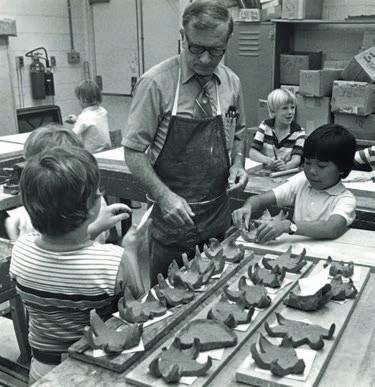
Even the woodshop has gone technological, though Mr. Hilliard, who retired in 1991, would mostly recognize the modern design and woodworking spaces. In 2015, a new high-tech piece of equipment arrived in the shop—a computer numerical control (CNC) router. Middle and Upper School students use the new CNC router to create objects like signs, robotics parts, inlay pieces, electric guitars, and more out of a wide range of materials.
Hunt Hilliard and students in the industrial arts shop.
The Middle School Robotics Club fielded two teams, Gearhounds and Robohounds, in the FIRST LEGO League’s Baltimore qualifier held in January. The teams spent countless hours over four months preparing to compete in this national event. Their robots faced multiple challenges on the field, such as moving a tripod, making rain come out of a cloud, and adding a pump. Teams were judged on their success on the field as well as a concept, design, and presentation of a solution to a hydrodynamic problem. The Gearhounds designed a water conservation device for a faucet; the Robohounds created a filter for desalination.
The Robohounds placed first in the Core Values category, which judged teamwork and professionalism. Of 50 teams, their third place overall finish qualified them to move on to the state level competition, held at UMBC on February 24.
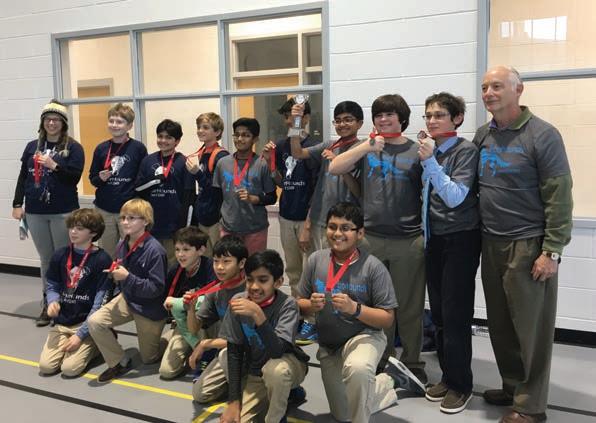
have a place to develop baseline skills for when they take engineering class electives as juniors and seniors. Plus, the pipeline of interested students will expand as they acquire greater skills.
Science teacher Amy Mussen is spearheading the Maker Movement in the Upper School. The division expects to create a permanent space soon; for now, boxes of projects belonging to her engineering students are neatly stacked on the counters and floors of her classroom. There is also space to tinker with basic robotics, 3D printing, and 3D carving, in a reconfigured space near the Educational Technology Services (ETS) office.
Less than a handful of years ago, robotics, taught by physics teacher Dr. Alvaro Salcedo, was added to the Upper School curriculum as an elective for ninth graders. A 3D printer was donated to the School, and physics teachers started adding in more design-based projects beyond the tried and true egg drop or rocket projects.
Older kids have more dexterity, and can better handle complex projects that include soldering, wiring for electronics, and detailed robotics. In Maker Club, Mussen, herself an engineer turned teacher, teaches boys the principles of engineering design, giving them career knowledge and practical math, science, and problem solving skills.
Students have Adobe Illustrator, Tinkercad (a simple online 3D design and 3D printing app), Fusion 360 (a 3D computer-aided design, mechanics, and engineering tool), and AutoCAD drafting software at their disposal. Mussen assigns engineering design projects, encouraging the boys to use the six step design process: define the problem; generate ideas; create a solution; test that solution; finish a prototype; refine the prototype, or as Mussen puts it, “rinse/repeat.”
One project was to design a “mousetrap” to capture a Ping-Pong ball. Not all were successful, again stressing the importance of learning from failure, and that failure leads to improvement. After all, James Dyson, founder of the
Makerspaces encourage boys to embrace creativity, collaborate, think critically, and communicate.

Dyson company, developed 5,126 failed prototypes of his vacuum before getting it right.
Perhaps the Dyson example is extreme. Yet Headmaster Henry Smyth often says that we are educating boys for jobs we can’t even imagine today. Adding design-based
thinking opportunities through makerspaces encourages boys to embrace creativity, collaborate, think critically, and communicate. When they do, the only limits to what they will accomplish are their own imaginations.
Surely, it will take inside a decade to see the true influence of Gilman’s makerspaces on boys’ eventual career choices.
Arguably, the first boys to embrace Dr. Salcedo’s nascent robotics club are among modern makers. One of these boys, Haohan “Mike” Lin ’16 currently studies computer science at University of California-Berkeley. “Participating in Gilman robotics provided me a lot of aspirations and it helped me decide to pursue computer science,” he says. “I am now interested in artificial intelligence and machine learning.” Jobs we can’t image, indeed.
If Mike stands as example, it’s not far-fetched to predict science, technology, engineering, and mathematics professional leadership to come from him, his robotics companions and successors, and those boys who will, in future years, take the most advantage of the makerspaces.
But what about alumni with five-year reunions under their belts? Gilman graduates have pursued careers that run the gamut of professions. Here are just two who could be considered the makers of their day. What might they have done in a makerspace?
Sam Frank ’08, owner and operator of Four Twelve, a construction and real estate investment company, describes himself as an “investor, a builder, a small business owner, and an engaged stakeholder in the community of Central Baltimore.” His company created 1600 Barclay, a whole block of new luxury townhomes in Station North. He’s also involved with Aging 2.0, a small business network related to healthcare and technology industries (his best friend from high school, Jake Tunney ’08, founded the Baltimore Aging 2.0 chapter).
For Sam, having a makerspace when he was a Gilman student would have been a boon. He chose to enter real estate and construction because he wanted to be part of projects that involved working with one’s hands, executing an artistic vision, and being able to create jobs for others. He speculates if he had access to a makerspace, he might have still chosen a career where he would build, whether a business or a tangible product, though that something might be more technologically based.
“These [makerspace] programs are so important in the modern economy,” he says. “I probably would have been closer to this world and maybe developed skills that allow you newer age careers – AI (artificial intelligence), software development, drones – the possibilities are limitless.”
Bob Laws ’04 has always been a maker. After graduating from Georgetown University with a double major in linguistics and Spanish and a minor in studio art, he went to work for tech start-ups, using his background in linguistics and the arts to design and build language-
“WHAT EXCITES ME MOST ABOUT THIS NEW MAKERSPACE IS ITS CAPACITY TO DEMONSTRATE TO YOUNG STUDENTS LIKE ME THAT CREATING SOMETHING OFTEN RELIES ON DIFFERENT STRENGTHS AND DIFFERENT DISCIPLINES.”
BOB LAWS ’04
learning smartphone applications. Two years ago, he branched out into one of the most literal of maker professions: he is now a highend furniture designer and fabricator based in San Francisco. Last December, West Elm, a national furniture retailer, featured a small collection of his work. (See his designs at www.boblawsdesign.com.)
During his Gilman days, Bob spent time under the tutelage of Karl Connolly, where he cultivated a passion for making art and gained skills in design and craftmanship, a foundation upon which he still builds today. Yet, he felt his creative left brain, so carefully cultivated by Connolly, competed with his science right brain nurtured by his Gilman education.
“What excites me most about this new makerspace is its capacity to demonstrate to young students like me that creating something often relies on different strengths and different disciplines,” Bob says. As a younger man, he believed his skills and interest in the arts and sciences were mutually exclusive; it took him “several jobs and much selfreflection” to realize that he didn’t have to choose to be an artist or a scientist, but that he could be both.
“I have no doubt that were a space like this available to me as a student, I would have learned to embrace my ‘competing’ interests much sooner, and probably would have found my way to being a maker and entrepreneur more quickly.”
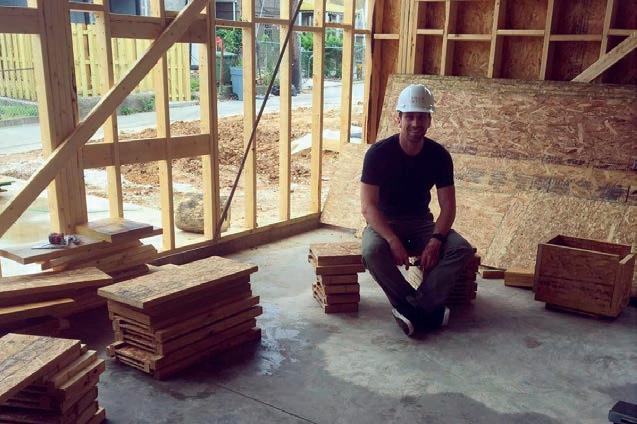
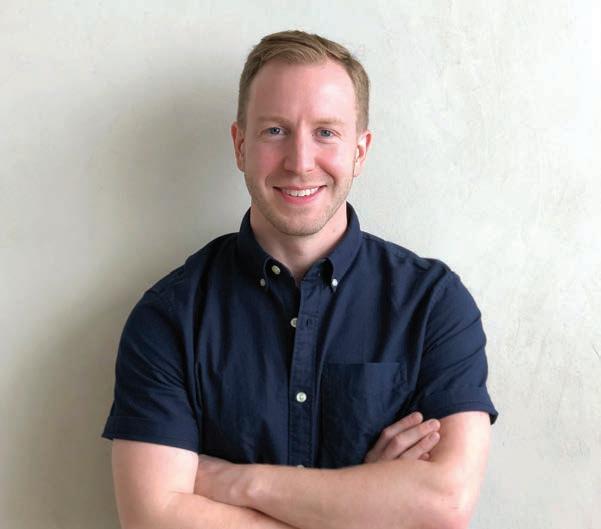
Though the Maker Movement in education, as such, is relatively young, and the makerspaces at Gilman are recent additions, alumni have always known what it means to be a maker.

David Brewster ’79 returned to Gilman for the first time in 42 years to present a thoughtful Upper School assembly in which the noted plein air artist encouraged students to strengthen their emotional intelligence through expanding their visual literacy.

“I want to demonstrate how the power of art positively teaches us how to live and to love,” he said when introducing his presentation.
In his slide presentation, he paired pictures of current Gilman students in different scenes – athletic, academic, and artistic – with the work of masters: a student working on a laptop with a Caravaggio of a saint studying books; imagery of Greek warriors with our ice hockey players and ancient runners with our cross country runners; water polo goalie with raised arm and a statue of an athlete throwing a discus. Though thousands of years separate these experiences, he explained, the visual design is strikingly similar and illustrates the common human experience that bridges eons. Art is an expression of people striving to create order out of chaos in an unending desire to understand the complexity of their feelings and the world in which they live.
Brewster describes himself “largely as a plein air” and studio painter. He works mostly with 6- or 8-inch rollers and, over the years, has developed a wide range of different marks with his preferred tools.
“I am interested in confronting what I call the visible reality of our times, the aspects of our environment that are iconic, but not necessarily picturesque,” he told the boys as he showed a photograph of himself making a painting of a McDonald’s. “I’m convinced that’s where we all have an opportunity to advance our insight and our intelligence about the
incongruities of our times by standing up against it and trying to make order out of it, to make sense of it.
Brewster said that the mesmeric power of art can lead to a deeper level of self discovery, and that is emotional intelligence.
Brewster’s slides included several paintings commissioned by Wm. Polk Carey ’43 for the Johns Hopkins Carey School of Business and works exploring social justice currently mounted in Structure and Perspective, a major curated art exhibit at the Maryland Historical Society (running now through October 14, 2018).
David Brewster attended Gilman for first through ninth grades before transferring to Middlesex School (Concord, Mass.). His father Walter is a member of the Class of 1950, and his grandfather Daniel Brewster graduated in 1914. He earned his MFA from the University of Pennsylvania in 1988, and has since been invited to paint, lecture, and exhibit throughout the United States, Europe, and Asia. He has devoted 16 years to teaching studio art fulltime, and his work has been the subject of over 25 solo gallery exhibitions and is represented in private and museum collections.
To learn more about David and his artwork, visit davidbrewsterfineart.com.

Redmond C. S. Finney and William Greene were visionary educators whose prescience and influence transformed Gilman. Finney, a Gilman class of 1947 graduate and longtime faculty member who served as headmaster from 1968 until 1992, is largely considered as one of the primary architects of integration at Gilman. In one of his early appointments as headmaster, he hired William Greene, Gilman’s first African-American faculty member.
Greene, who retired in 2001 as assistant headmaster, pushed the School to take crucial next steps to ensure that boys from high-poverty families and families of color would enroll and flourish as part of an inclusive Gilman community.
The new Finney-Greene Scholars program honors the legacy of these two Gilman greats in both name and intent. Thanks to the support of the France-Merrick Foundation, which gave a $1 million cornerstone gift to the First Things First campaign to establish the program, the School is able to provide young men from traditionally underrepresented backgrounds additional support throughout their educational journey at Gilman.

The inaugural group of Finney-Greene Scholars formed at the start of the 2017-2018 school year. Plans are to grow the program from the first cohort of seven scholars to a full complement of 20 total scholars in the Middle and Upper Schools.
Finney-Greene Scholars are the caliber of young men whom Finney and Greene helped to shepherd through Gilman: boys with academic potential, grit, and commitment; boys with strong character and an interest in school community contributions; and boys with an apparent gap between prior experience and the demands of a Gilman education. These
An intimate luncheon was held to announce the Finney-Greene Scholars program. SEATED, LEFT TO RIGHT: Cheo Hurley ’92, Henry

STANDING, LEFT TO RIGHT: Amy
boys are capable young men who have a record of academic success, exhibit exemplary character and moral traits, and possess unique or special talents.
Finney-Greene Scholars receive supplementary academic support through an additional layer of adult guidance provided by Upper School English and history teacher Michael Molina, who directs the Upper School program, and Middle School Dean of Students Eric Marner, who leads the Middle School program. Scholars also receive financial assistance for those costs not related to tuition and not covered by the School’s financial aid program,
ensuring these boys have open access to the School’s full academic, athletic, artistic, and social programs.
The first cohort of scholars is thriving. “These are boys who excel academically, as well as in sports and music co-curricular activities,” says Molina. “They serve as mentors to younger students, have already built strong relationships with peers and teachers, and hold themselves to high standards as members of Gilman’s community.”
The scholars promise to contribute greatly to the intellectual and academic, athletic, and artistic environment at Gilman:
One scholar travels to Gilman each day from Aberdeen, Md., and has committed his full attention to varsity football and wrestling and to his studies, working hard to meet the significant uptick in academic expectation from his public middle school.
A competitive chess player and youth mixed-martial artist, another scholar is an “infectiously enthusiastic presence” who is deeply invested in his own academic success. He also is mentoring and tutoring a third grade student.
This scholar, whose older brothers attended Gilman, played the family sport of baseball, and chose a new athletic path, making varsity on a highly competitive Gilman soccer team.
Another scholar comes to Gilman only two years after immigrating from China; he succeeds academically despite challenges with both spoken and written English and unfamiliarity with the subtle idiosyncrasies of American culture and the English language. He also runs cross country.
One scholar is a gifted musician, a natural trombone player, who joined the Drum Line, the Middlemen, the Middle Ts, the Jazz Band, and the Concert Band, while continuting to
participate in the Baltimore Symphony Orchestra OrchKids program.
This scholar has hit the ground running as if he had attended Gilman since kindergarten. He has made friends quickly and immersed himself into the community by joining the band and the football team. He approaches each day with visible appreciation for his opportunities and his surroundings.
And this scholar is very reserved, possessing a quiet demeanor that belies the fact that he is perhaps the best basketball player Gilman has seen in the last two decades or so. His focus is academics, and he is determined to make the best of his time at Gilman.
Molina says that their peers regard them as engaged, enthusiastic, and respectful. The boys set a high bar for those who follow them into the Finney-Greene Scholars program as the second cohort next school year.
The program provides each scholar with extra resources he may need to overcome obstacles to fully participate and thrive at Gilman, to become his best self, to explore and fulfill his own talents, and to reach his potential within an inclusive, supportive community.
Foundation
Support from community partners helps the School reach beyond present achievements to nimbly become the best school we can be in a changing and complex world. No other organization understands this better than the FranceMerrick Foundation. The Foundation has assisted Gilman in creating a world-class athletic facility, backed efforts to support faculty professional development, and ensured the School’s ability to keep independent school education accessible through scholarship, including one for faculty children established in honor of Gilman’s very own Ironman and longest serving faculty member, Bill Merrick ’51.




















One of our School’s most accomplished and most loyal alumni, Walter Lord ’35 wrote 12 books, notable among them A Night to Remember, detailing the last hours of the Titanic. In fact, his 1982 book, The Miracle of Dunkirk, reappeared on the New York Times Best Sellers list this past summer, enjoying a resurgence resulting from interest piqued by Dunkirk, the movie.
The Walter Lord Collection contains his personal library, Civil War memorabilia, manuscripts, research notes, scrapbooks about ships, and the pencils he used to write A Night to Remember.




Walter Lord was a great champion of Gilman and a munificent benefactor, and he often traveled from his New York City home to attend school events. His spirit is felt
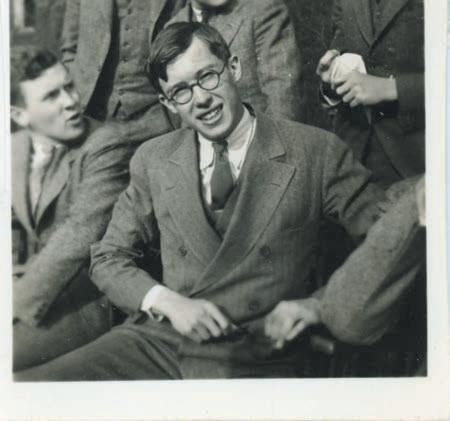
at the School every day, particularly in the Middle School, where the library is named in honor of Walter Lord.
This past October, Middle School boys celebrated Walter Lord’s 100th birthday (October 8) with a Kona ice snow cone celebration. How else to celebrate an author who gained fame writing about a ship’s fateful meeting with an iceberg?

Presented here are two artifacts from the Lord Collection. Spittoon is a self-published newspaper during his days as a Gilman boy. The Blue and The Gray contains The Captain’s Table 1933 – a story of a fictionalized ship sinking that harkens to the eventual narrative style he would use for A Night to Remember








Browse our Walter Lord Collection on Digital Maryland: gilman.edu/walterlord.


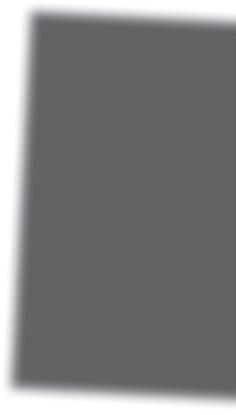
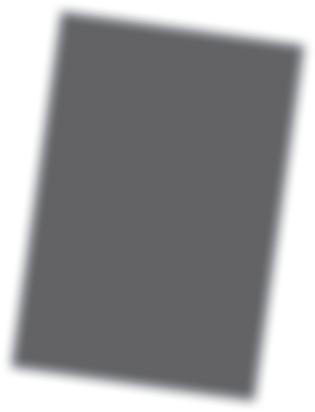
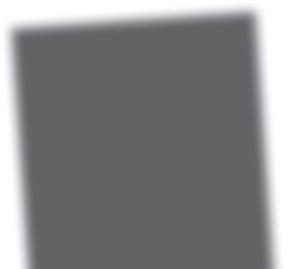




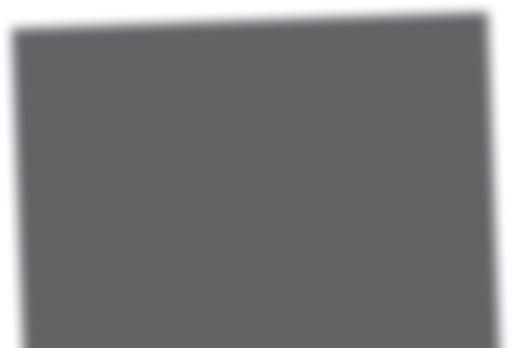



When one considers academics at Gilman School, the first thing that might come to mind is a traditional curriculum including Latin and geometry. And, while those subjects are well represented among more than 200 Upper School course offerings, students also select from topics designed to expand their knowledge and perspective of contemporary issues.
A new course this year is Environmental Sustainability, a yearlong science offering that studies the Anthropocene Era (a proposed epoch dating from the commencement of significant human impact on the Earth’s geology and ecosystems) by delving deeply into issues relating to population, food, water, and energy.
Teaching about sustainability gives Upper School science teachers Frank Fitzgibbon and Tim Lauer, who designed the course together and each teach a 17-student section, myriad opportunities to delve into deeper study of the interrelationship between people and all facets of the environment. Learning in this class is largely firsthand through interactions with people and organizations working in the broad field of environmental sustainability.
Speakers have included Dr. Mike Cranfield, co-director of Gorilla Doctors, a team based at the Maryland Zoo dedicated to preserving endangered wild mountain and Grauer’s (eastern lowland) gorilla species in Rwanda, Uganda, and the Democratic Republic of Congo. Anne
Palmer P’18, who directs the Food Communities and Public Health program at the Johns Hopkins Center for a Livable Future (CLF). CLF, in collaboration with the Baltimore Food Policy Initiative (BFPI), recently released Baltimore City’s Food Environment Report: 2018, which identifies gaps in healthy food access for city residents. University of Delaware Professor McKay Jenkins, the author of Food Fight, a book that looks at what GMOs actually mean for the American food system, from both sides of the issue, visited in the spring.
During the first half of the course, Fitzgibbon and Lauer led students on field trips to the Patapsco Wastewater Treatment Plant (stinky, stinky, stinky) and Ashburton Water Filtration Plant (not so stinky). During the spring semester, students toured a local farm in Reisterstown, Md.
Class projects challenge students to propose solutions to problems facing the planet and to take action in various ways. Senior Charlie Ratcliffe submitted a class essay to The Baltimore Sun that was published as an op-ed on December 27. Charlie argued that despite the 2004 “Flush Tax” that helped modernize filtration plants and, subsequently, reduced nitrogen and phosphorous pollution by 50 percent, these pollutants continue to have an adverse affect on the environment. He cited the Patapsco Wastewater Plant as the worst polluter in Maryland and called for improvements to the plant, which are three-years behind schedule, to be fast-tracked.
A food challenge project directed students to one of three sustainable actions: to become a vegetarian or vegan for one week, to make entire meals from scratch using locallysourced products only, or to monitor and compost food waste at home. Seniors Julian Arrington, Brandon Madison, Mason Freeman, and Brandon Willis, inspired by their week of cooking, put on a cooking demonstration for Lower School boys, preparing more healthful alternatives of kidfriendly comfort food: eggs and turkey bacon, grilled cheese, and turkey burgers.
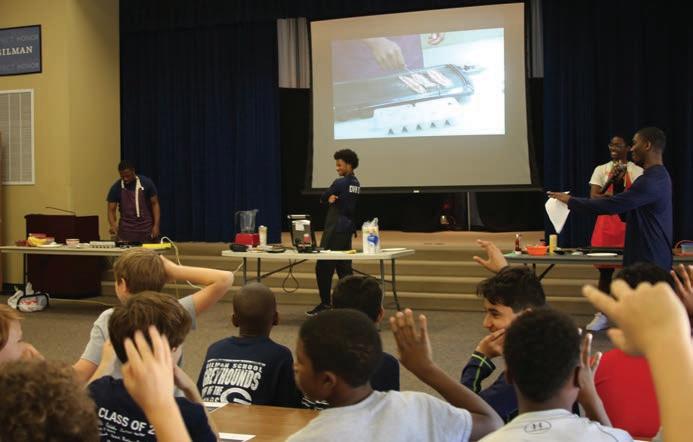
“At the end of the day, the food you are eating is not really as healthy as you want it be,” said Willis, serving as emcee for the demonstration.
“I get it now: from the food I choose to the energy I consume, my daily actions can make a big difference to the environment. It is eye opening and empowering to know that I can contribute to real change. This class taught me that,” said senior Sawyer Lynch.
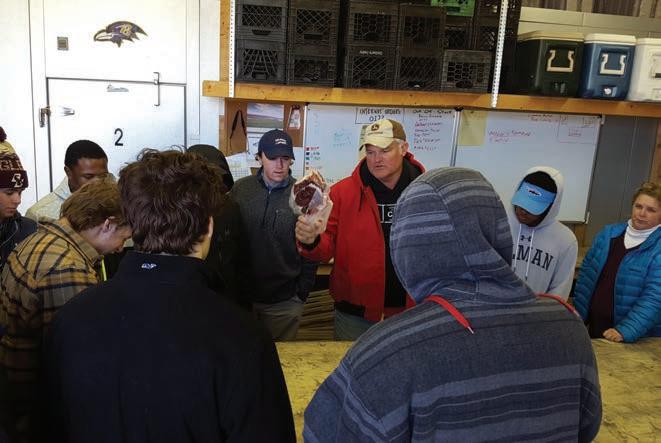

Surely, Sawyer and the 33 other students taking the class will never look at their world in quite the same way.
To read Senior Charlie Ratcliffe’s essay, visit: gilman.edu/patapsco.
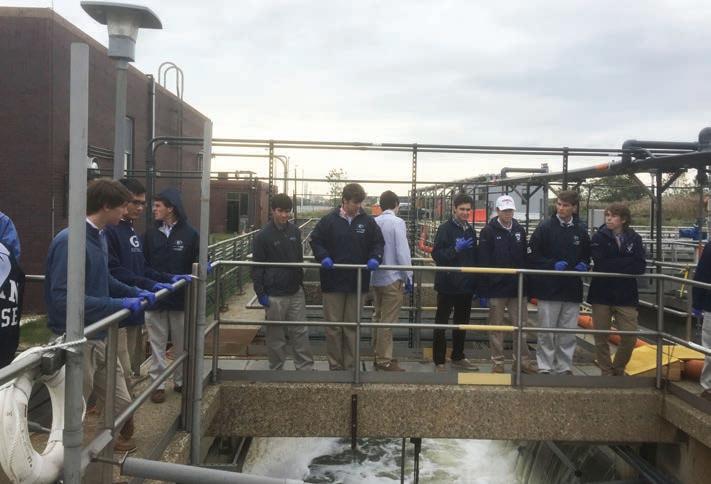
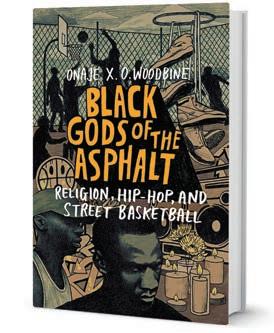
Onaje X. O. Woodbine, a religious studies teacher at Phillips Academy (Mass.) and author of Black Gods of the Asphalt offered a thought-provoking conversation about race, education, and athletics during his daylong visit to the Upper School in January. He addressed the entire Upper School during assembly, had lunch with students, visited classes, and addressed the community in a special evening event that included a book signing.
A former streetball player who became an all-star Ivy League basketball player at Yale, Woodbine decided to leave the team in his sophomore year to focus on his studies. He then received a racist letter from his coaches suggesting that he was only at Yale to “entertain the Yale community,” not because of his intellect and academic prowess.
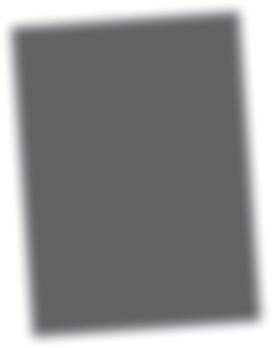
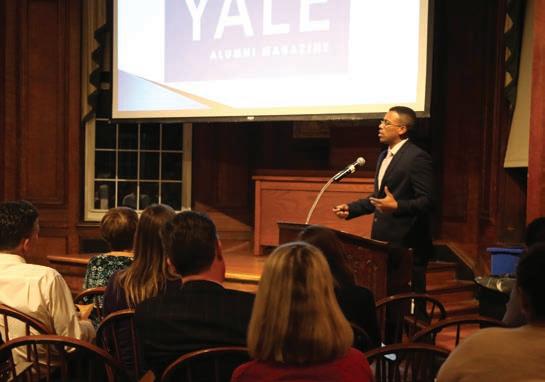
Woodbine presents athletics as a way of storytelling about a school and its values, and his message to bring “the mind and body together more consciously in these spaces, so that athletes are not isolated from the rest of campus.”
Gilman’s Office of Community, Inclusion, and Equity sponsored Woodbine’s visit.
The Dante Society of America selected Upper School teacher Dan Christian to receive the second annual Durling Prize, recognizing excellence in the teaching of Dante’s life, time, and works in North American secondary schools. The Society noted Mr. Christian’s “imaginative, innovative approach to the teaching of Dante... bring[ing] Dante’s poetry into dialogue with other texts and media, including song lyrics, thereby renewing and redefining the relevance of its story for contemporary student readers.”

At the age of six, Mekhi Johnson ’18 heard a radio story about a student who was accepted at all of the Ivy League schools and told his mother, “I’m going to do that one day.” On Ivy Decision Day he learned that he has achieved his goal. Johnson has also been accepted at the University of Chicago, Georgetown University, University of Virginia, and University of Maryland.
A Gilman student since first grade, Johnson is a National Merit Scholarship Program Commended Student with a 98.1 average. His extracurricular activities include editing the yearbook and literary magazine; playing in the hand bell choir, jazz band, and drum line; volunteering with Bridges, an academic and cultural enrichment program serving elementary school students in several Title I schools; and working as part of the cast and crew for musical theater productions. He sings with the Traveling Men, Gilman’s a capella group, and serves as the president of the Diversity Council.
Antique chemistry
links a family history to Gilman.
Sean Mills ’18 and his family shared a part of their lore with Gilman when they gave an antique chemistry lab glassware set to the Gilman science department.
“The pieces were from a home tinkering lab that my maternal grandfather, Sid Barber, used in his work as a head of technical sales for E.F. Houghton & Co.,” explained Thomas Mills, Sean’s uncle, in an email to the School.
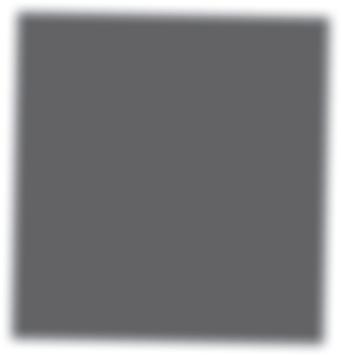
The kit includes beakers and flasks, as well as condensers, crucibles, and titration vessels.
More than 280,000 applications were sent to Ivy League schools last year. Less than five applicants achieved the distinction of acceptance by all eight schools. Johnson is the first Gilman student to do so. His final decision? Harvard.

“Students use the glassware on a daily basis,” says Upper School Science Department Chair Jim Morrison. “The glassware has been nicely integrated into our collection, and an antique condenser has a place of honor in a display cabinet.”
Thomas Mills also shared that Sid Barber began working at E.F. Houghton & Co. as a bottlewasher when he was 16. He took night classes in chemistry, worked at “workaholic” levels, and eventually rose to a position in which he traveled the world marketing
Houghton products and adapting them for local use.
Philadelphia-based Houghton made hydraulic and metal treatment oils for industrial and defense applications. They made the hydraulic fluid that aircraft carriers used in the catapults that launched their aircraft, and one of their products, Cosmoline, was used during World War II to protect weapons from corrosion from salty, ocean air.

Greyhound pride was displayed in full force in the days leading up to Blue Gray 2017: the boys wore orange on Empathy Day, the Raiders raided, the pep rally rallied. Gilman and McDonogh alumni joined for a combined happy hour to celebrate our friendliest of rivalries.
Game day festivities included music from the Gilman drum line, food trucks, and family fun activities.
Best of all, Gilman prevailed, winning the 102nd Gilman-McDonogh Football Classic (played under the lights at McDonogh) for the second time in three years with a 24-21 victory. The Price Trophy returns to Roland Avenue.










More than 500 alumni, family members, and guests returned to campus for Alumni Weekend, April 27-28. In a weekend full of (eventual) sunshine and spirit, special moments included John Schmick ’67 dazzling attendees with a walk down Gilman’s memory lane at the Gilman Forever Luncheon on Friday; the Class of 1998 foursome earning the Reunion Cup with a precocious showing at the golf outing; crab feasters devouring Maryland’s favorite crustaceans at impressive rates; the Class of 1968 marking its 50th Reunion with grace and style; Dan Christian taking Classes without Quizzes “students” on a trip
to Dante’s Paradise and receiving the May Holmes Service Award at the Alumni Awards Luncheon; the varsity lacrosse team securing a thrilling double-overtime win over St. Paul’s; members of the Class of 2013 turning up late to their reunion party because they were celebrating with classmate Micah Kiser, who had just been drafted by the L.A. Rams; and, of course, the Class of 1973 just topping the Class of 1993 for the “We’re having so much fun we don’t want to leave our class reunion!” award.

Visit gilman.edu/aw18photos







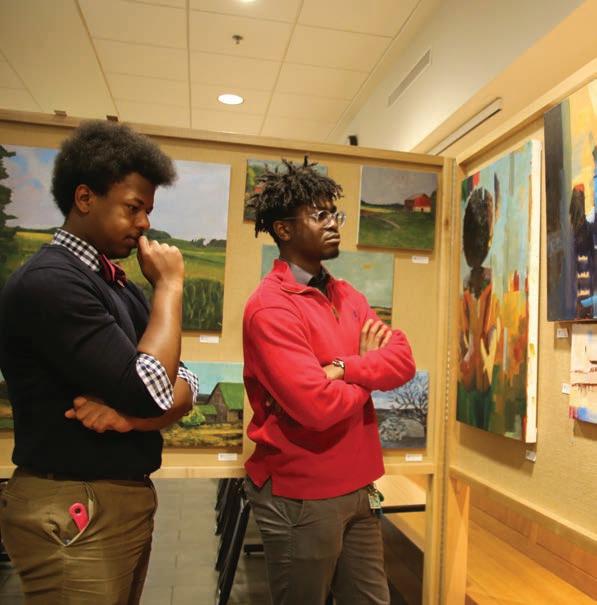







Root for the home team: Gilman alumni, family, and friends cheer the Birds to a 10-2 win over the Texas Rangers, July 19.
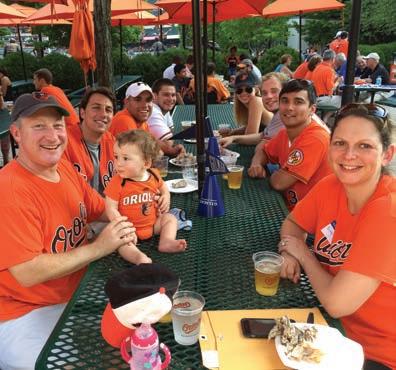
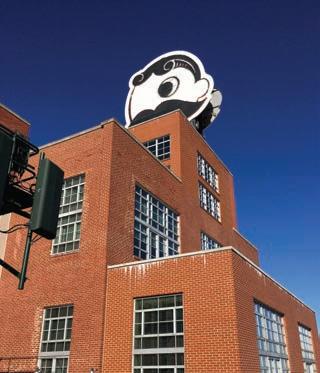
Thanksgiving Thursday is reserved for turkey and cranberry sauce; Thanksgiving Wednesday is for friends . . . and tacos and beer! Gilman and Bryn Mawr alumni gather on November 22 for a joint happy hour at Peabody Heights Brewery, sponsored by the Gilman Alumni Foodies Group.


Hosts John Pinney ’04 and Aaron Salsbury ’04 arrange a Gilman Happy Hour at River Roast in Chicago, December 6.
Orange and black mix with blue and gray at Ryleigh’s Oyster Food & Spirits when rival alumni happily gather the eve of the big game, November 3.

Big Apple alumni gather at The Penn Club for their annual regional reception, November 7. A full contingent of faculty, staff, and Alumni Association board members join Headmaster Henry P. A. Smyth in the quick jaunt north.


Hosts Ellie and Temple Grassi ’65 graciously host the Washington, D.C. Alumni Regional Reception at the Chevy Chase Club, November 28.


Alumni basketball players return to the Finney Center to watch the Greyhounds take to the hardwood in the Bristow Tip-off, December 2. Special guests include Varsity Basketball Head Coach Will Bartz ’99, former Head Coaches Owen Daly, Tony Jordan, and Tim Holley ’77, and the tournament’s namesake, Sherm Bristow ’67.


The Black Alumni Group sponsors the 17th Annual Alumni Basketball Event, December 23. Players enjoy pick-up basketball, pizza, and fellowship.

Generations of Gilman wrestling alumni reminisce and reconnect at a reception during the Haswell M. Franklin ’50 Gilman Duals, January 27.
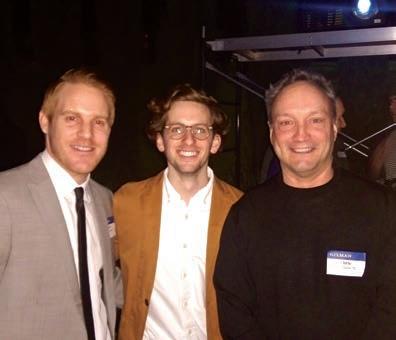

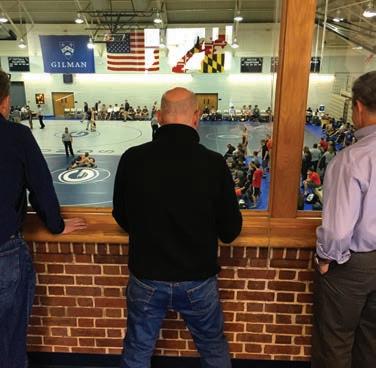
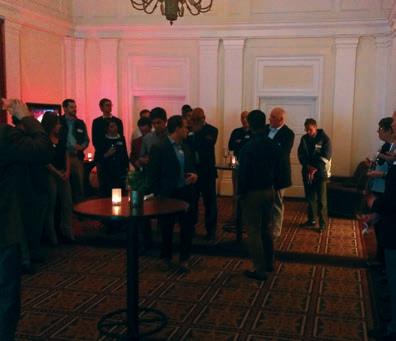
Headmaster Henry P. A. Smyth and longtime teacher-coaches
Rob Heubeck, Upper School head, and Tim Holley ’77, athletic director, travel to California for alumni receptions in San Francisco, Los Angeles, and San Diego. Many thanks to Scott Hurtt ’91 for hosting in San Francisco on January 23 and Conor Fetting-Smith ’00 for hosting in Los Angeles on January 24.
Alumni and friends of Gilman –snowbirds and residents alike, gather at spots across Florida to learn about all things Gilman.
Andy Adelson ’59 hosted guests at his Miami Beach home; Bill Beatson ’59 hosted an event at the Colony Hotel in Palm Beach; former Board of Trustees

President Paul McBride and his wife Christine McBride PP ’06, ’09, ’13, and ’14 hosted the Gulf Coast edition at their home in Naples.

Boston


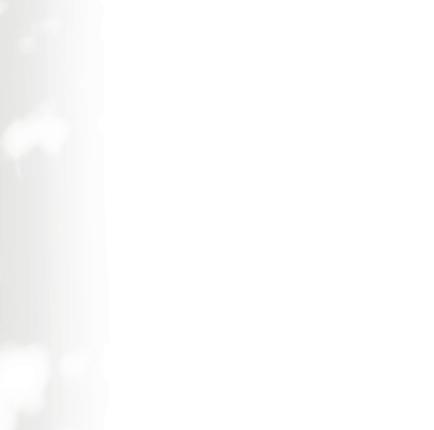

Nikki and Harry Nudelman ’81 welcome Headmaster Henry P. A. Smyth, Assistant Head Bartley Griffith, several faculty members and fellow alumni who have traded Berger cookies for Boston cream pie, April 11.
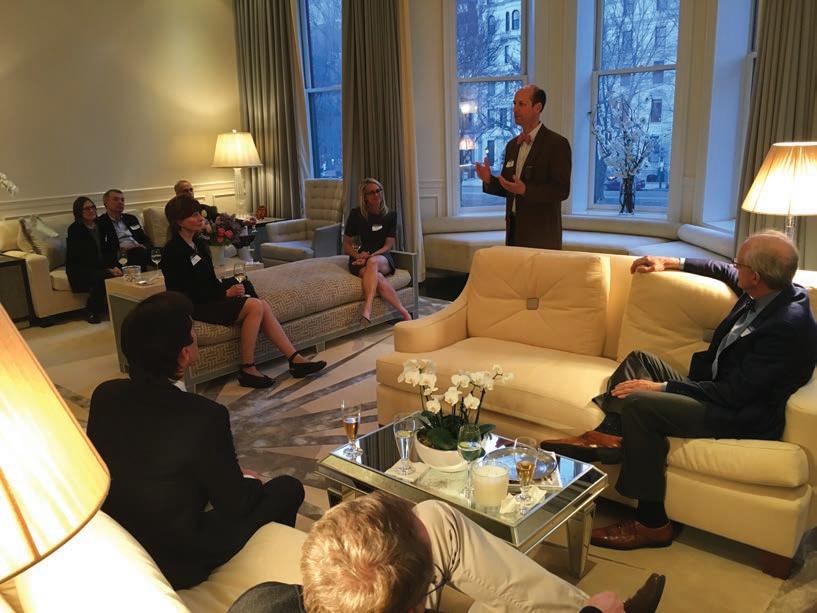
During the last day of their spring break, 13 Upper School students rose at the crack of dawn, dressed to impress, and boarded a New York-bound train for Wall Street 101, an annual trip offering an inside look at the world of finance through the eyes of Gilman alumni.

They visited with Michael Faridi ’02, of Morgan Stanley, who offered an overview of the industry and suggested ways that students can position themselves for jobs on Wall Street.


Jon Jackman ’95, of Taconic Capital, hosted a conferenceroom lunch and explained the hedge fund industry.
The afternoon brought a panel discussion at Berkshire Capital, hosted by Bruce Cameron ’74, and included Paul Stamas ’00 of General Atlantic, Mark Bower ’99 of Bienville Capital, Abe Choi ’04 of BGC Partners, and Chris Merwin ’03 of Goldman Sachs. Following the panel, Howard Feinglass ’78, of Priam Capital, joined the group for a reception, during which the boys practiced their networking skills.
The boys received the benefit of more than 100 combined years of business experience, while alumni enjoyed meeting current Gilman students, who will soon be joining a network of alumni that is more than 8,200 strong across industries and around the globe.
We are only asking once! Instead of asking you to make two gifts, one to support the Alumni Association and one to support the gilman fund, we are only asking you to make a gift to the gilman fund. Your contribution will support alumni programming as well as faculty salaries, new technology, enhancements to the arts and athletics program, and financial aid.
The Alumni Association recently launched The Gilman Network, a new online networking platform that allows Gilman alumni to reconnect, network, share job listings and events, and develop mentoring relationships. Powered by Graduway software, The Gilman Network is designed explicitly for and made up exclusively of Gilman alumni – a sort of private LinkedIn for Gilman alums.
Accessing The Gilman Network is simple. Go to www.TheGilmanNetwork.com and create your profile. Simply click “email” under the “Join Now” heading and enter your information. The full name of each alumnus and the email address the Alumni Office has on file has been pre-populated to the site so new users will be able to authenticate without incident. You may also log in with your LinkedIn profile or another email address; however, doing so will necessitate approval of your profile, which could take up to 24 hours.

Once you’re in, you can browse the news, updates, photos, and events. You can also search the directory to connect with
It’s the end of days for Alumni Association dues. Instead of receiving appeals to make two gifts, one to support the Alumni Association and one to support the gilman fund, alumni will only receive appeals to make gifts to the gilman fund

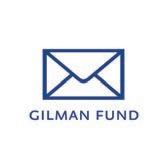
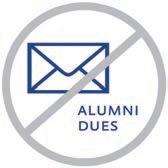
“At Gilman, we consider every alumnus to be a welcomed member of the Alumni Association. To this end, we are eliminating annual membership dues,” wrote Alumni Association President Edward W. (Ted) Brown III ’84, P’18 in a letter to the alumni constituency.
Contributions to the gilman fund support alumni programming as well as faculty salaries, new technology, enhancements to the arts and athletics program, and financial aid. Visit www.gilman.edu/onlinegiving to make a gift.
fellow alumni, look for and post events in your area, and search the jobs board for current openings.

Should you have any questions, please contact Nathaniel Badder ’94, Director of Alumni Relations and Outreach, at nbadder@gilman.edu or 410-323-7178.



3-1
Posted
2017
Cross Country is back. They finished a fantastic season as MIAA regular season tri-champions, Georgetown Prep Classic champions, as well as runner-up at the Maryland/DC Private School Championship. They fell short at the MIAA Championships but will certainly be back in the future.” Well said, Witt. At the MD/DC Private School Championships, Coach Joe Duncan’s varsity squad finished second (Eric Gibson ’18, finishing third, Will Dowling ’19, 13th, Charlie Edwards ’20, 10th, Keith Roberts ’19, 22nd, Morgan Zinn ’19, 34th). The JV team finished as champions as Charlie Shapiro ’18 finished second to lead the Hounds to victory.

5-7
The Greyhounds prevailed in our traditional biggest game of the season, winning the 102nd Gilman-McDonogh matchup with a 24-21 victory, which secured the team’s playoff berth and earned a No. 2 seed spot in MIAA A Conference postseason play. Head Coach Tim Holley ’77 was named the Ravens High School Coach of the Week following the Gilman-McDonogh game. Earlier in the season, the Baltimore Football Club named Holley Coach of the Week, following the Greyhounds’ 35-28 win over Calvert Hall. The Baltimore Sun named Brandon Madison ’18 its All-Metro Football Offensive Player of the Year, and Thomas Booker earned recognition on the All-Metro Defense First Team.
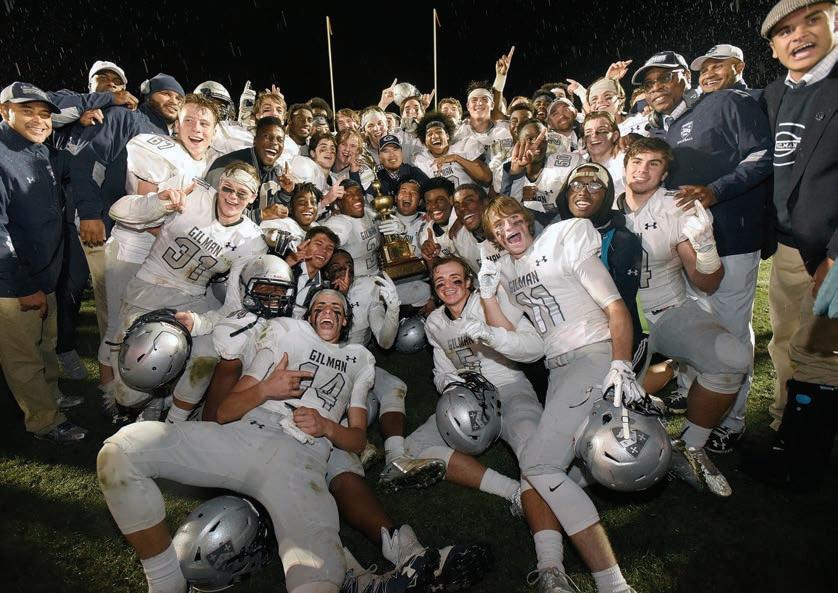

8-10-1
Coach Jon Seals’ squad started strong with late August back-to-back wins against Boys’ Latin and Loyola. Despite six successive September losses, they battled back to post wins (some in overtime) and earn a spot in the MIAA Quarterfinals. The game –and season – ended in a 2-3 OT loss for the Greyhounds.

Four out of five is terrific! Varsity volleyball won the MIAA Championship for the fourth time in the past five years and captured an inaugural title for new head coach Diego Matorras. The “VolleyHounds” streaked ahead 2-0 before the Mt. St. Joe’s Gaels rallied for a third game win. The Hounds quickly recovered by winning the fourth game and claiming the title with a 3-1 match victory.
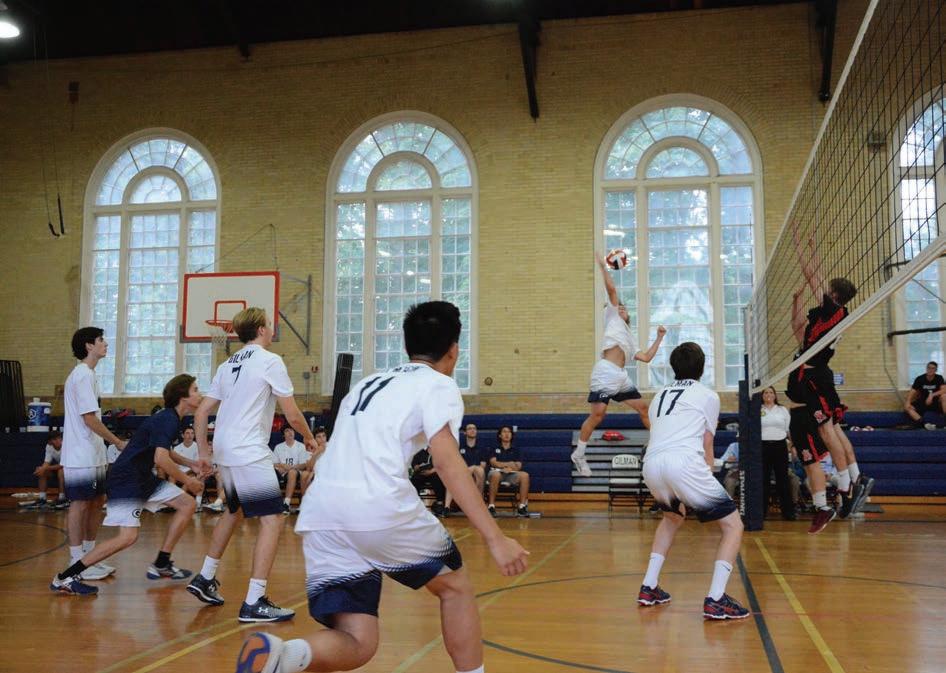
6-6

The varsity water polo team continues to improve, and holds great promise for next and future years, especially since Gilman’s first-ever JV water polo finals appearance brought home a first-ever MIAA championship! The No. 2 Greyhounds prevailed over No. 1 Loyola, 7-6. Congratulations to the team and coach Vaughan Smith.

Coach Will Bartz ’99 took the helm of a team of gutsy players, who often heroically landed on the wrong side of a very tight score. Points were scored; in fact, junior guard Jalen Rucker scored his 1,000th point on February 6 in a game against St. Vincent Pallotti. Despite a late January 14-point comeback to defeat Annapolis Area Christian, the Greyhounds could not clinch their next few conference games and thus did not secure a spot in the MIAA playoffs.



Sts. Peter and Paul exacted revenge for a 7-4 loss against the “IceHounds” a week earlier when the teams met again the MIAA semifinals. The close 3-2 win ended the IceHounds season a bit earlier than the teammates would have liked. Kudos to Coach Zack Collins and team captains Xander Martin ’19 and Mason Swindell ’18 and all the players on an excellent season overall.
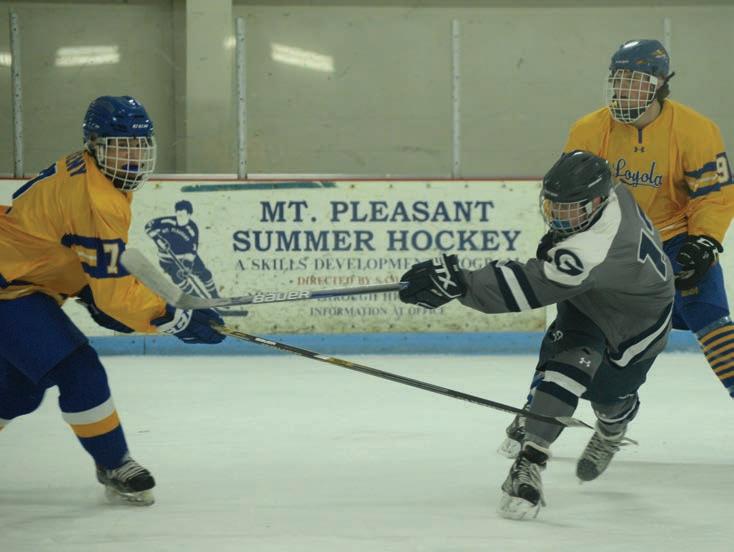
The Indoor Track team won the MIAA Championship meet, bringing the Foreman Cup back home (again) and finishing the season undefeated with 146.5 points. The following athletes finished in first place at the MIAA: 4x800: Beck Wittstadt ’21, Max Stern ’18, Garrett Shriver ’19, Keith Roberts ’19; 800: Keith Roberts; long jump: Mason Freeman ’18; high jump: Mason Freeman; triple jump: Julian Arrington ’18; shot put: Thomas Booker ’18; pole vault: Sal Ricci ’20.
Indoor track senior captain Mason Freeman started off his spring break at the New Balance Indoor Nationals at the famed New York Armory. With a jump of 22’ 4.25”, he finished in 12th place in the long jump championship division. He was the top finishing competitor from Maryland.
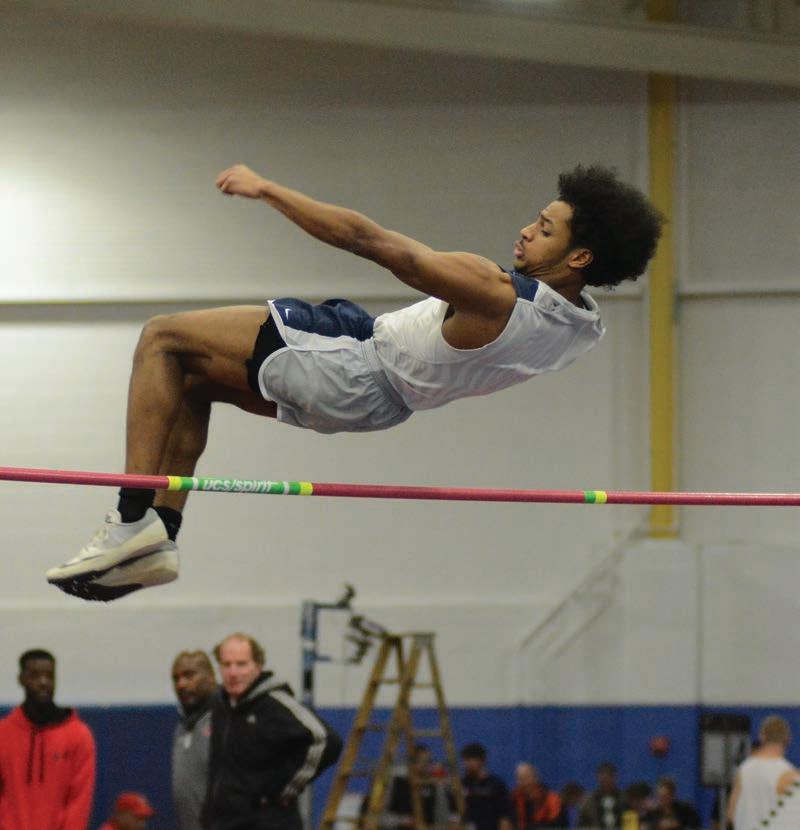

1-5
Coach Vaughan Smith’s varsity and JV swim teams performed well at the MIAA Championship swim meet. Overall, the varsity team took fifth place, and the JV team earned fourth. Max Verheyen ’19 placed third in the varsity 200-yard in the individual medley event. The varsity 4x100 freestyle team, Eric Zhang ’18, Nathan Hedgecock ’19, Neddie Wight ’19, and Max Verheyen, placed third.
For the JV team (3-1 for the season), Andrew Kim ’20 won the 100-yard breaststroke and Jacob Diaz ’19 placed second in the JV 50-yard freestyle. The 4x100 freestyle team, Jacob Diaz, Ian Raley ’21, Charlie Nuermberger ’21, and Antonio Mendez-Trendler ’21, and the 4x50 medley relay team, Charlie Hiller ’21, Andrew Kim, Ian Raley, and Ben Thomas ‘20, placed third in respective events.
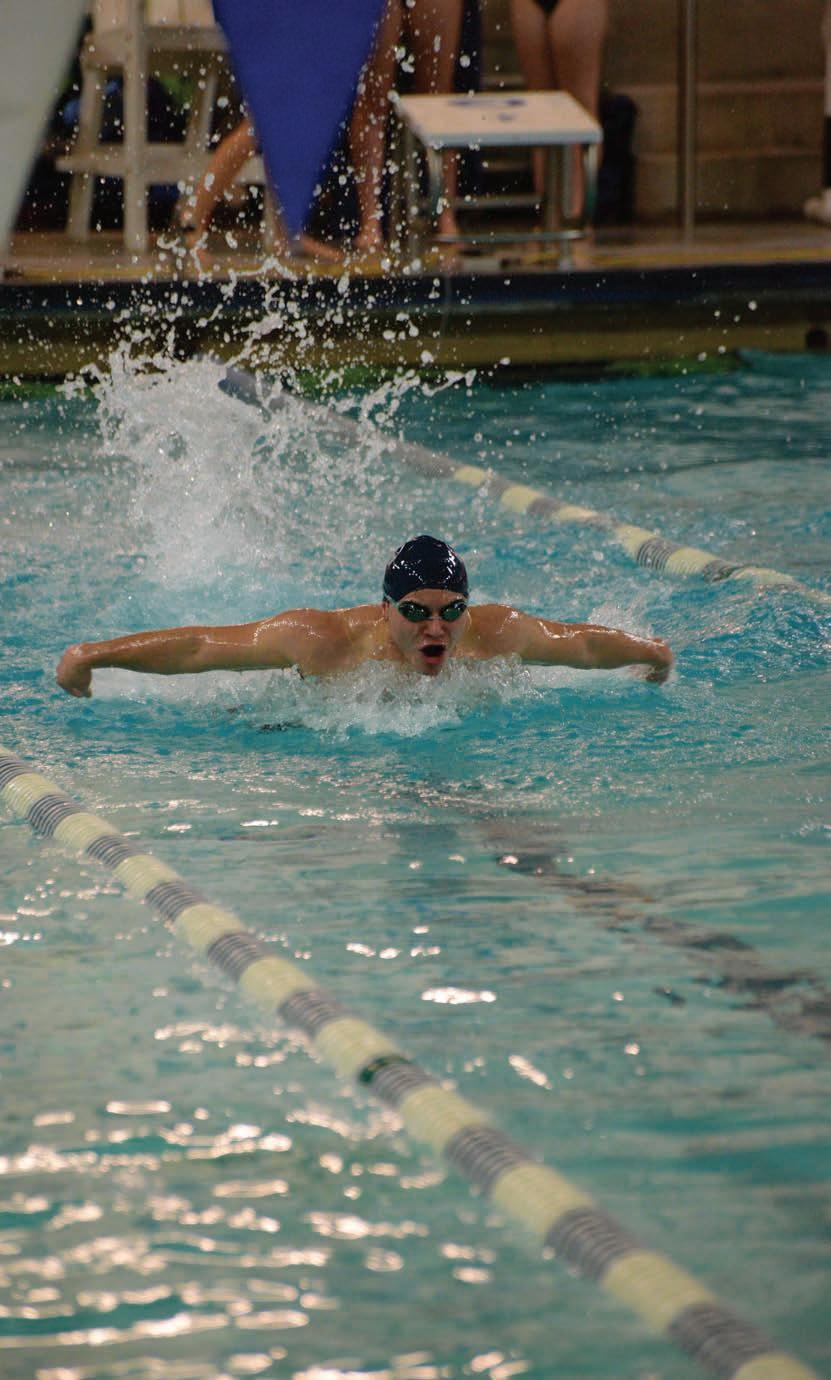

16-5
“All good things must come to an end.” –Geoffrey Chaucer. McDonogh ended Gilman’s 10-year streak of never losing a match, nor an MIAA championship, during the 2018 season. McDonogh first prevailed against the Hounds in a hard-fought victory on December 13, which came down to a match between each team’s No. 1 seed, with McDonogh squeaking by with a 4-3 win. When the teams met again on January 25, McDonogh posted a 5-2 win. The teams met for the third and final time of the season at the February 12 MIAA Championship final, when McDonogh took the crown away from Gilman with a 6-1 decision. The Greyhounds, led by Coach Doug DeSmit, finished their strong season second in the MIAA and ranked #14 nationally in Division I.
5-3
An impressive showing for Coach Bryn Holmes and the Greyhounds in the Maryland Independent State Tournament, which, incidentally was created by Haswell M. Franklin, Sr. ’50, for whom the Gilman Duals are named. The following wrestlers placed in their weight classes: Alex Slodzinski ’18, fifth place, 195 lb; Andy Weinstein ’20, sixth place, 106 lb; Cole Brown ’18, sixth place, 152 lb; Kevante Beard ’19, sixth place, 182 lb; Gage Crites ’20, eighth place, 285 lb. Andy Weinstein, Cole Brown, Kevonte Beard, and Alex Slodzinski compete in the National Preps.



17-15
Ranked No. 6 in the doubleelimination MIAA tournament, the Greyhounds, under the leadership of Coach Larry Sheets, played solid baseball to win three out of four games (Calvert Hall 4-3, John Carroll 5-3, loss to Archbishop Curley 3-4, Loyola Blakefield 2-1) before meeting Archbishop Curley again in the finals. The No. 1 Archbishop Curley Friars ended an outstanding Gilman season with a 3-8 win over the Greyhounds.


The Gilman varsity golf team, coached by Mike Wallace, broke two longstanding school records for Most Birdies this season. Mac Webster ’18 and Jarius Gaines ’18, playing at No. 1 and No. 2, hit 11 birdies combined, three more than the previous 1 and 2 record set in 2008. Overall, the team made 18 birdies, outscoring the 16 birdies made in 2007.

At the 36-hole 2018 MIAA Individual Stroke Play Golf Championships, Webster (71-71-142) found his way to the top of the pack with an amazing first place performance, Gaines (71-73-144) earned an outstanding third place honor, and Charlie Ratcliffe ’18 (80-79-159) made the cut and finished just outside the top ten. Also, the team won 16-15 against Loyola Blakefield at Elkridge to earn a berth in the MIAA team championship match against St. Paul’s at Caves Valley, which we lost 6-15.
The JV golf team, coached by Joe Ciattei, claimed the MIAA JV Championship for the second straight year, prevailing 13-8 over Mt. St. Joseph.
The Sun cited senior golf captain Mac Webster’s consistency in naming him Boy Athlete of the Week for May 1.

6-8
Brooks Matthews ’87’s squad narrowly miss a return to the MIAA playoffs, finishing seventh in the league. The Hounds played a challenging non-conference schedule, notching wins over regional powers including an exciting 10-8 win over Georgetown Prep before entering the bulk of the MIAA season. A one-goal overtime win over St. Paul’s during Alumni Weekend was the first of three straight late season wins.

Under the leadership of Head Coach Steve Krulevitz, varsity tennis won an unbelievable fifth consecutive team MIAA A Team Championship by defeating Calvert Hall 5-0. The 2018 team is the first five-time winner in 60 years of league matches. The team broke the previous record of four straight wins, which it tied last year with the 1966-1969 MSA championship team.
Gilman tennis also took top honors in the MIAA A Individual Tournament. Derrick Thompson ’18, Noah Jun ’19, Dylan Walters ’20, Nick Boucher ’20, Michael Haire ’21, Matt Pang ’21 each won an MIAA individual title, marking the second time Gilman has swept the league and all five individual titles. During league, playoffs, and individual events, the Hounds never lost a set, finishing 60-0.
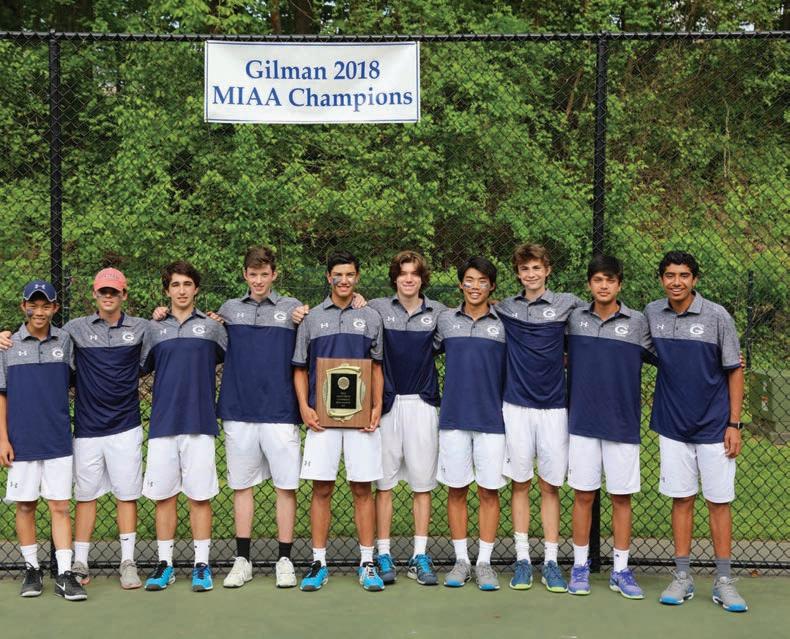
The JV team also won its team championship with a 4-1 win against Loyola Blakefield.
The Sun pointed out Derrick Thompson’s 36-0 Gilman record in naming him Boy Athlete of the Week for May 22.

7-0
For the second year in a row, Coach Johnnie Foreman’s track and field team finished first place at the MIAA A Championship conference meet. With 171 points, they kept the Hoffman Cup at Gilman after an undefeated dual meet season. Gold medal winners include Beck Wittstadt ’21, Max Stern ’18, Keith Roberts ’19, Eric Gibson ’18 (4x800 relay and 3200), Keith Roberts ’19 (800), Ciaran Sandy ’18 (long jump), Mason Freeman ’18 (long jump), and Thomas Booker ’18 (shot put). Silver medal winners include Mamady Dangnokho ’20, Nico GonzalezReed ’20, Khari Jones ’19, and Darien Lawson ’18 (4x100), Gibson (800), Gus Cortezi ’20 (300 hurdles), Booker (discus), and Freeman (high jump). Freeman (100) and Jordan Foster ’20 (triple jump) earned bronze medals. A true team effort. The JV finished second place with 145 points.
Look for these Gilman players gracing collegiate fields of play beginning this fall. Congratulations to all!
Maxwell Costes, University of Maryland Michael Willis, Georgetown University

Nick Bach has been appointed Gilman’s new varsity football head coach, succeeding Tim Holley ’77. He joined the Gilman faculty this spring.
Nick was most recently the varsity football head coach at Mountain View High School, a Region 6 AAAAAAA high school in Gwinnett County, Georgia. Prior to becoming the head coach, he served as Mountain View’s defensive coordinator, special teams coordinator, recruiting coordinator, academic coordinator, and linebacker coach. With Nick at the helm, his teams achieved school records in every statistical category, culminating with the school’s first football state playoff berth and statewide ranking (#9 in Class 7A) in 2016. His 2017 team capped a 9-2 regular season by advancing to the second round of the Class 7A state playoffs for the first time in school history. While at Mountain View he was honored as the Touchdown Club of Atlanta’s Coach of the Week, Region 6-7A Coach of the Year, and the Gwinnett County Coach of the Year. In addition to his football
FOOTBALL
Thomas Booker, Stanford University
Brandon Madison, United States Naval Academy
Alex Slodzinski, Trinity College
Brandon Willis, United States Naval Academy
GOLF
Mac Webster, Boston College
Jarius Gaines, Hampton University

LACROSSE
Liam Muhly, Drexel University
Sam Cosimano, Franklin & Marshall College
Will DeMuth, Franklin & Marshall College
Jeremy Cranston, Dickinson College
Teddy MacFarlane, Dickinson College
Jonathon Hazlehurst, Rhodes College
Douglas Godine, Denison University
SQUASH
Will Dewire, Tufts University
TENNIS
Derrick Thompson, United States Naval Academy
TRACK
Mason Freeman, Bowdoin College
By the Numbers:
19 Student-Athletes
15 Schools from Maryland to California
7 Sports
3 Schools with more than one Gilman player in the same sport
1 School with Gilman players in different sports
duties at Mountain View, Nick taught history and served in the athletics administration.
A 2001 graduate of the State University College at Buffalo, Nick holds a Bachelor of Science in Health and Wellness and was a defensive end on the football team. In addition, Nick holds a Master of Arts in Teaching from Otterbein University. He holds his RAA certification from the National Interscholastic Athletic Administrators Association.
Prior to joining the faculty at Mountain View, Nick coached high school football in New York state and at the collegiate level at Johns Hopkins University, Otterbein University, East Stroudsburg University, and the University of Buffalo.
Thomas Booker ’18 was one of six studentathletes named regional winners at the 55th Annual Scholar Athlete Awards Dinner, hosted by the Baltimore Chapter of the National Football Foundation and College Hall of Fame on March 7. Booker was selected from 65 nominees from football-playing schools in Baltimore City and Anne Arundel, Baltimore, Carroll, Frederick, Harford, and Howard counties.
Booker, who played both as a tight end and defensive lineman during his high school career, helped lead the Greyhounds to an exciting victory over McDonogh and an appearance in the MIAA championship game in his senior season. An All-Metro first-team selection as a defensive

end, he is also a two-time All-State selection. In addition, he played basketball and ran indoor and outdoor track. He was a captain of the track and field team this spring.
With a 95 academic average, Thomas was vice president of the senior class and served on both the honor and judiciary committees, which adjudicate honor code and disciplinary violations, respectively. The Cum Laude Society inducted him into its ranks this spring. He will play football and study economics at Stanford University in the fall, joining fellow Greyhounds Dorian Maddox ’16 and Devery Hamilton ’16 on the Cardinal roster.
And, if his name sounds familiar, Thomas is the son of Ava Lias-Booker and Tom Booker ’79, who played football at both Gilman and Wisconsin.
Headmaster Henry P. A. Smyth announced that Lori Bristow and Russell Wrenn ’96 will serve together as Gilman’s next directors of athletics, effective July 1. Their vast and varied experience, combined with their deep ties both to Gilman and to Baltimore-area athletics, make Bristow and Wrenn a formidable team to guide Gilman athletics well into the future.

Lori Bristow holds a B.S. and an M.Ed. from Salisbury State College. She joined the Gilman community in 1986, assuming a wide range of roles throughout the years: head athletic trainer, assistant director of athletics, associate director of athletics, and director of sports medicine. She is currently serving as interim director of athletics. In addition to teaching physical education and health classes at Gilman she has shared her expertise more broadly as a consultant in the field of sports medicine. A member of the Halls of Fame for both the MidAtlantic Athletic Trainers’ Association and the Maryland Athletic Trainers’ Association (in the first class of women to be recognized), Bristow has received numerous awards and has served on a host of committees and associations.
After graduating from Gilman in 1996, Russell Wrenn earned a B.A., cum laude, from Washington and Lee University and a J.D., cum laude, from Georgia State University College of Law. A football and baseball player at Washington and Lee University, he began his post-collegiate life as a college football and baseball coach, first as an assistant in both sports at Dickinson College and Johns Hopkins University and later as the head baseball coach at Dickinson. At The Westminster Schools in Atlanta he served as a teacher, grade chair, and coach. He was recognized as the Georgia State Assistant Coach of the Year in 2015, the same year that the Wildcats won the state football championship. As the head varsity baseball
coach, he led that team to a Georgia state championship in 2016 and received too many baseball coaching awards to list. Wrenn gained administrative experience as a seventh and eighth grade boys’ chair and as a member of the middle school leadership team. He also spent a year as an associate in an Atlanta law firm. Wrenn returned to Gilman in the summer of 2016 to serve as assistant director of athletics, Upper School English teacher, and assistant football and baseball coach.
After a sabbatical, longtime Athletic Director Timothy Holley, Jr. ’77 will return to Gilman in the fall and shift his focus more to external affairs. Bryn Holmes, wrestling coach and Middle School math teacher, has been named the assistant director of athletics.
Gilman celebrated the official launch of First Things First: Endowing Gilman’s Promise and People on Saturday, October 7. This comprehensive capital campaign to raise $60 million in philanthropic support will strengthen Gilman’s leadership legacy by giving talented boys access to the School and guiding them to excellent colleges and lives of purpose; attracting and supporting gifted faculty; and providing the programs that allow every boy to discover and develop the best in himself. The campaign closes June 30, 2019.
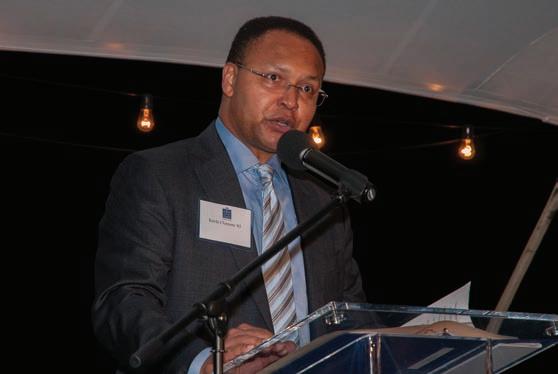
During the dinner, Keefe B. Clemons ’85 and Evan B. Behrle ’10 spoke about their Gilman experiences. Visit gilman.edu/kickoff to view videos of their remarks.




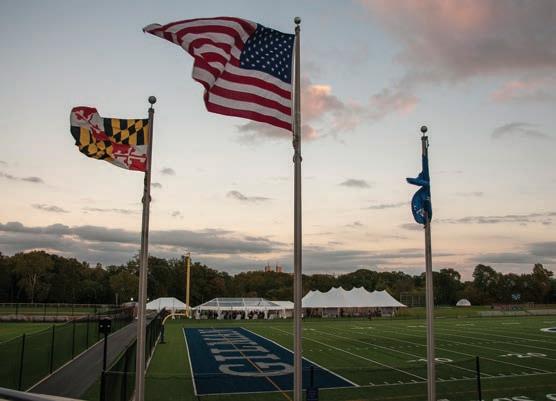





Robert F. Greenhill ’54 and his late wife Gayle honored the life and influence of one of Gilman’s most inspiring teachers, role models, outstanding educators, and trailblazers, Ruth Weaver Williams, with a $2 million leadership gift to First Things First , which will establish an endowed faculty chair.
The Robert F. Greenhill ’54 and Gayle G. GreenhillRuth W. Williams Distinguished Teaching Chair for Mathematics satisfies a key First Things First campaign priority to support teaching and learning. The endowed fund will assist the School in recruiting and retaining superb faculty members.
Former colleagues and students remember Ruth Williams for her mastery of mathematics, academic versatility, deep concern for her students, and diligence as an advisor. She understood her students’ and advisees’ strengths and weaknesses, and she was the kind of teacher who spent her afternoons driving around the MIAA to cheer on her students at their games.


“Ruth has been a friend and a role model for all who knew her,” says Mr. Greenhill.
Williams taught at Gilman in two stints, 1972-1979 and 1995-2011, spending 10 years teaching in the Lower School before moving to the Upper School, where she taught every mathematics class offered at Gilman. During her career, she taught at Roland Park Country School, The Bryn Mawr School, Garrison Forest School, and Goucher College. She retired in June 2011. A few months later, she died of lung cancer, on September 7, 2011.
In a Gilman News article at the time of Williams’ retirement, Matt Schlerf ’11 wrote, “If there’s one thing to be
JOHN DURHAM ’11 remembered besides her sanguine mentality, her selfless compassion, and her history as a Gilman legend, it’s her favorite saying regarding division by zero and life in general: ‘Remember . . . you can’t sit on a beach ball!’ ”
“Mrs. Williams taught me to do what my heart told me to do,” remarked John Durham ’11, in the News following Williams’ death. “Success will always come to those who work hard enough to obtain it, but it’s also important to have fun in life and prioritize correctly.”
The first Williams Chair will be awarded in 2019. To honor Williams’ legacy, the chair will honor an experienced faculty member in the Math department who emulates the same qualities as the chair’s namesake: teaching acumen, scholarship, and deep dedication to students both in and out of the classroom.
For as much as this chair credits Ruth Williams’ legacy as a Gilman teacher, it also honors her family’s deep connections to the School. A Bryn Mawr graduate, Williams met her husband and soul mate, Dr. McRae Williams ’54, during high school. Her brother, Alva Weaver, graduated from Gilman in 1949, as did McRae’s brothers Palmer F. C. Williams, Jr. in 1947 and Robert R. Williams in 1948 and his father Palmer F. C. Williams in 1919. Ruth and McRae’s son McRae W. Williams is a member of the class of 1989.
Donald F. Rogers Jr. has been named the inaugural recipient of the Greenhill-Williams chair.
The Robert F. Greenhill ’54 and Gayle G. Greenhill-Ruth W. Williams
Distinguished Teaching Chair for Mathematics is very much the result of several people who knew her and McRae Williams ’54 best. The Class of 1954’s extraordinary class secretary, Ralph L. DeGroff ’54, followed Mr. Greenhill’s example and directed his own First Things First leadership gift toward the chair. Their combined generosity encouraged their classmates to contribute as well. To date, more than $2.28 million has been raised in total.
The fund remains open to contributions from classmates and former students who wish to join this tribute to help perpetuate Ruth Williams’s educational legacy at Gilman. To make a gift, please make contributions payable to Gilman School, noting the Ruth Williams Chair on the memo. Please mail to: Gilman School – Development Office, Attn: M. Kate Ratcliffe, Director of Development, 5407 Roland Avenue, Baltimore, MD 21210.
Or, give online at gilman.edu/onlinegiving .
“MRS. WILLIAMS TAUGHT ME TO DO WHAT MY HEART TOLD ME TO DO. SUCCESS WILL ALWAYS COME TO THOSE WHO WORK HARD ENOUGH TO OBTAIN IT, BUT IT’S ALSO IMPORTANT TO HAVE FUN IN LIFE AND PRIORITIZE CORRECTLY.”
Ad Astra, Gilman’s leadership giving society for graduates of the last 15 years, launched this school year. With recognition levels below existing leadership giving clubs and societies, Ad Astra invites alumni to begin a philanthropic relationship with the School as soon as they graduate.
Ad Astra gives the School an opportunity to recognize supporters, who, on average, make up nearly a quarter of the gilman fund donors in a single year and contribute nearly $70,000 annually.
Alumni who join Ad Astra directly impact Gilman’s campus, students, faculty, and community with their support. Their gifts enable future leaders to have the same experience and quality of education as they did. They pay it back, and they pay it forward, making a difference in the lives of current and future Gilman boys.



Visit gilman.edu/adastra for additional information.
Ad Astra proudly draws its name from the Gilman shield and seal. “Ad Astra” is an abbreviated version of “Ad astra per aspera,” which means “to the stars through difficulties.”
Visit gilman.edu/archives to learn more about the evolution of the Gilman seal.

Tiglath Pileser III was one of three Assyrian kings by that name 1,000 years or so B.C. That he has a connection to a newborn baby in Baltimore some 3,000 years later is the result of indecision on the part of the baby’s parents. It’s not likely that King Tiglath was ever called “Tiggie” by his subjects, but his 1936 namesake picked up that moniker when Mr. and Mrs. Ralph L. DeGroff could not agree on a name for their second child. So Mr. DeGroff, a student of the Bible and admirer of Tiglath Pileser, called him that until he and his wife agreed on Ralph L. DeGroff, Jr. But by then he was forever “Tiggie.”
Except on Wall Street where the Gilman, Princeton, University of Virginia Darden School graduate was always “Ralph.”
Tiggie was my closest friend for almost 70 years. In the beginning, we would get talking about one thing or another after football or baseball or lacrosse practice, often about girls, but also often politics, world events, the future, the draft. Before I knew it, I had often walked with him all the way to Charles Street as he headed home. Then I had to walk back to meet my father on Roland Avenue. But that ritual was “the start of a beautiful friendship.”
Tiggie loved a good argument. He was opinionated and stubborn, but it never got personal. We disagreed often and sometimes vigorously, but it was fun and only made our friendship stronger.
Following graduate school and the U.S. Army, Tiggie’s intelligence, integrity, strong reliance on facts and evidence and their inevitable conclusions caught the attention of Dillon Read and Company, Inc., Chairman C. Douglas Dillon. Tiggie, now Ralph, of course, joined the company, eventually becoming a partner. He later left and became a managing director of Donaldson, Lufkin and Jenrette Securities Corporation, retiring in 1994.
Tiggie seldom let a moment go by without purpose. He had several passions – first his wonderful wife and partner of 30 years, Marion, his two stepchildren Andrew and Marion (“Missy”), and his nieces and nephew. I’m not sure how to rank his other passions, but they certainly included his professional life, his Dutch heritage, Gilman School, golf, politics, and his friends. Perhaps I should have put his friends second

after family, for more than anyone else I know Tiggie was devoted to his vast circle of friends. And he had the capacity to make every friend feel as though he or she was a vitally important friend – because to him each was.
From his father, he inherited a keen interest in their Dutch heritage. The senior DeGroff had been instrumental, with the help of then New York Governor Nelson Rockefeller, in funding a decades-long initiative to translate the vast volume of original documents from the Dutch American colonial period to modern English. Tiggie continued to support that program personally. He was also the 35-year treasurer of the Holland Society of New York. The New Netherland Institute and The Holland Society honored him for his work. The latest translation, “Councill Minutes – 8” from Pieter Stuyvesant’s time, was published this year and is dedicated to Ralph L. DeGroff, Jr.
His large capacity heart also had a huge space, perhaps the largest except that for his family and friends, reserved for Gilman School. Even during his many decades in New York, he maintained a home in Baltimore and stayed in close contact with friends and Gilman.
We elected him class secretary when we graduated in 1954, a role he happily played until he turned it over to me just weeks before he died. Not so incidentally, he also served for 35 years as secretary of his Princeton class of 1958, following a five-year stint as its class president.
Tiggie served Gilman as a trustee for eight years and in 2016 received the highly prestigious Dawson L. Farber Award for his “. . . abundance of service to Gilman sustained over an extended period of time through volunteer leadership, advocacy, and financial support.”
No one in my experience was as good at raising money as Tiggie. I inevitably wrote a check for more than I intended when he asked. Knowing how generous he was to Gilman
(and Princeton and others) made it hard to say no. He and Marion established the Ralph L. and Marion W. DeGroff Scholarship Fund at Gilman in honor of his parents.
Tiggie would not be happy if I failed to mention his hole in one at the Elkridge Club and very recent tournament victory with his playing partner, our close and dear friend, the late Harris Jones ’54. Tiggie played golf as he lived life – seriously but with enthusiasm and joy. But he left his golf game at the 19th hole as he left his work at the office. He held no grudges and never stayed mad if he ever got mad. He had a faith rooted in his strong belief that God is a forgiving and loving God.
As we both wound down our careers, we began again to pick up our frequent conversations, talking once every week or two for the past 15 years and a couple of times a week more recently as he fought his last battle. He was always optimistic that the news would inevitably get better.
In my last conversation with him just a couple of days before he died, he was weak and not able to speak for long. We chatted briefly about our friendship. As his voice faded there was a quiet moment, and then he mostly whispered, “Thank you, Dave.” I swallowed and managed to croak a “Thank you, Tig” in reply. Another quiet moment and then we both said “Goodbye.”
Men seldom make lifelong friendships with other men. I consider it one of the greatest blessings of my life that Ralph L. (Tiglath Pileser) DeGroff, Jr. chose me for one of his.
God be with you, Tiggie. I love you.
Ralph L. DeGroff, Jr. died on April 19, 2018. He was 81. He is survived by his wife, Marion Buckler Parsons DeGroff; a stepson, Andrew Evans Sinwell of Dallas; a stepdaughter, Marion Sinwell Smith of Wiltondale; a sister, Lynn DeGroff Lafferty of Towson; and five granddaughters.
Former Music Department Chair John R. Merrill reached the coda of his life on Wednesday, March 28, when he died at his Baltimore home from complications of Parkinson’s Disease. He was 83.
John attended the Peabody Conservatory of Music where he received both his Bachelor’s and Master’s degrees. He served in the Army as an assistant chaplain and organist and, upon his discharge, directed church choirs at St John’s Methodist Church in Hamilton, Memorial Episcopal in Bolton Hill, and Second Presbyterian in Guilford.

From 1962 through 1996, John taught at Gilman, where he embodied the sterling characteristics of a true gentleman and a loyal teacher, well mannered with a steadfast commitment to his profession and to the School that he loved. He possessed a marvelous sense of humor and a prolific memory regarding music and musicians. He initially taught both English and music history and later added a successful Advanced Placement course in music
theory and composition. Under his leadership, the School’s offerings in music enlarged from the traditional ninth grade Survey of Music course to elective courses in Instrumental Music, Words and Music, and Twentieth Century Music. With his guidance, the art offerings expanded as well. Eight Upper School art courses were made available to students and the Lower and Middle Schools offered art in every grade. Merrill also directed the Glee Club and The Traveling Men, the School’s a capella singing group.
With little fanfare, John nurtured a love of music in innumerable Gilman boys. Indeed, as respected music critic Ted Libbey ’69 wrote in a 1996 Gilman Bulletin article on the occasion of his retirement, John took “no credit for the things his students have done. Yet it’s unlikely that many of our dreams would have endured, or even existed, in a world without him.”

World-renowned composer Christopher Rouse ’67 also expressed his appreciation for John’s tutelage by dedicating his Symphony No. 3 to him. The St. Louis Symphony, which commissioned the work, performed its world premiere in early May, 2011. In a program note of that performance, Rouse wrote of John, “Without his kindness and encouragement, I might never have found the fortitude to persevere in my dream of being a composer.”
During his tenure, John was awarded the Russell Chair for his excellence as an educator; he also was the recipient of the Broadus-Hubbard Award, which is provided to a faculty member for travel and professional development. In 1978, he received the Walker Mini-Sabbatical, which afforded him, as he said, the opportunity “to attend music festivals in Europe and to retrace the footsteps of renowned composers such as Haydn, Mozart, Beethoven, and Brahms.” In 1997, he was awarded the May Holmes Service Award, which is presented to a member of the Gilman community who has served the School in a distinguished and meritorious fashion.
The 1996 Cynosure dedication to Mr. Merrill summarizes well his contribution to the Gilman community: “His professionalism, his genius for teaching, and his imagination have both inspired countless students to strive for a high standard and have earned him throughout his tenure the plaudits of students, faculty, and parents.”
John is survived by nieces Linda Dannenmann and Barbara Savage and by nephews John Westwood, Robert Westwood, Robert Merrill, and Steven Merrill, as well as many great-nieces and great-nephews.
Memorial donations may be made in John’s name to the Gilman School Music Department or to The Michael J. Fox Foundation for Parkinson’s Research.
GILMAN REMEMBERS THOSE ALUMNI WHO HAVE DIED IN RECENT MONTHS. MAY THEY REST IN PEACE.
Dr. Beverly S. Ridgely ’39
The Hon. Alexander Harvey, II ’41
Mr. David G. F. Mock ’43
Dr. John A.C. Colston, Jr. ’44
Mr. Robert H. Sayre, IV ’44
Mr. John A. Herndon ’45
Mr. William Neill, III ’45
Mr. Edwin B. Jarrett, Jr. ’49
Dr. John M. Bergland, III ’50
Dr. Charles Coady Brown ’50
Mr. W. Griffin Morrel, Jr. ’51
Dr. T. Rutter O’Rourk, Jr. ’52
Mr. Alexander Y. Hoff ’53
Mr. Thomas P. Perkins, III ’53
Mr. Thomas W. Burdette ’54
Mr. Ralph L. DeGroff, Jr. ’54
Mr. Merrell L. Stout, Jr. ’54
Mr. James F. O’Hara, III ’55
Rev. R. Cotton Fite ’56
Mr. H. Price Headley, Jr. ’57
Mr. R. Bruce Campbell ’59
Mr. James H. Franklin, III ’59
Mr. Philip L. King, Jr. ’59
Mr. Richard C. Lewin ’60
Mr. Charles C. Owens ’60
Dr. Leslie H. Pierce, Jr. ’61
Mr. Thurston R. Adams, Jr. ’62
Mr. Stephen C. Bishop ’65
Mr. Charles N. Curlett ’65
Mr. David B. Selenkow ’71
Mr. Kevin B. Kamenetz ’75
Mr. Gregory B. Buyalos ’89
Mr. Michael D. Spencer, Jr. ’91
Mr. Daniel J. Zito ’01
Faculty and Staff
Mr. Carl Ahlgren
Mrs. Regina Higdon
Mr. John R. Merrill
Deaths reported to Gilman between May 30, 2017 and May 15, 2018.
The 115 members of the Class of 2018 marked their high school graduation on a stormy Sunday, June 10 . The rain held long enough for the graduates to pose for their traditional class photograph on the steps of Carey Hall while families, friends, and faculty members arrived at Redmond C. S. Finney Arena for the 121 st Founders Day exercises.
Valedictorian Matthew Ziwen Mu reminded his classmates of the life lessons they collectively learned, citing among them the curiosity and perseverance of the debate teams and the hydroponics club, the independence they learned from parents and peers, the classmates’ ability to reach out to each other in times of need, and the connections they made during Senior Retreat.
He thanked the faculty for being teachers, coaches, mentors, and friends. Mu also thanked parents “for being out there, cheering on the sidelines, for all our games, for being there for both our highs and lows, allowing us to drive out to some of those parties on the weekends, and for even letting us be those stupid teenagers we sometimes want to be.”
Mu concluded his remarks by imploring his classmates, as well as all Gilman underclassmen, to be both doers and dreamers, to “dream big, and do great.”
“I’ve truly realized the importance of being both a doer and a dreamer,” Mu remarked. “To those who find themselves constantly foregoing the final destination, it never hurts to sometimes look up and really see what lies out in front of you. And while it’s great to be a dreamer, out there seeking what’s at the forefront of our imagination, sometimes we overlook the day-to-day challenges which serve as stepping stones to a greater goal.”
Headmaster Henry P. A. Smyth, in his remarks, told the boys that graduation celebrates both what they have accomplished thus far in life and that they are ready for the life road ahead. He recalled a theme that rang twice in the previous evening’s baccalaureate service: Keynote speaker Michael Beatty spoke of his own realization that success in life is defined by being “of value” to family and to others, and School President Piper Bond read “What Do You
Think,” a Carl Sandberg poem that implored readers “to get dirty and be actually useful once in a while, if not twice.”
Smyth told the boys that to be useful, to be of value, they must see the world around them, to see whom or what they might be able to serve. They must identify what the world around them needs, viewing this world through a lens shaped by universal values and common purpose. Each graduate has talents to share, value to add, and light to shine. And when one knows what needs to be done, he must tap into his own talents in order to accomplish the task.

“Gilman has helped you to hone your individual gifts, some of which you knew you had when you arrived, and some of which you discovered while you were here,” said Headmaster Smyth. “We’ve asked you to pursue excellence. But we’ve also
asked you to act honorably, to have integrity, to demonstrate respect, to practice humility.”
Yet, “when talent is paired with character, when gifts are shared with others, then ability is an altogether more powerful force.”
Smyth sent the graduates out into the larger world knowing that Gilman has helped them develop their abilities, has given them companionship in their classmates, and has given them the capacity to love. “We send you out into that larger world knowing that you will useful,” he concluded. “I am excited about what lies ahead for you, and because of you.”
Board of Trustees President Scott Wieler asked the boys to consider a question posed by New York Times writer David Brooks: should you live life for your resume or for your eulogy? He further explained that the boys will build their



resume and eulogy virtues in a world vastly different from, yet created by, their parents. They are part of a new American aristocracy, as suggested by a recent Atlantic Monthly cover.
“Anything is truly possible for you; your talent is essential, and your outcomes are a function of your own genius, efforts, persistence and, yes, luck,” Wieler said.
Before the graduates received their diplomas, several students won awards for scholarship, athletic performance, and community service (see below). The Headmaster presented several faculty members with awards and recognized those who had completed 20 years of service to
the School (see below). Smyth also recognized three retirees, whose combined years of service total 119: Donald L. Abrams, Jerome Latimer, and Robert D. Smith.
In what has become a tradition, the Traveling Men, featuring four members of the graduating class – Nicholas Jeffrey Auen, Barrett Thomas Crawford, Mekhi Onaje
Jonathan Johnson, and Michael Thomas Melvin, Jr. – sang
“The Parting Song,” a song of departure based on a 17thcentury Scottish song. To conclude the ceremony, pairs of graduates left the stage with a special handshake, hug, selfie, or in the case of the last single graduate to exit, Sean Thomas Mills, a final bow.
Apgar Award for Teaching Excellence
Sarah J. Miller
Broadus-Hubbard Award
Donnel Thompson Jr. ’91
Class of 1947 Fund for Meritorious Teaching
Peter H. Lander
John K. and Robert F. M. Culver Chair
James Stith Bolling Spragins 2017-2019
Elizabeth Ann Knapp 2018-2020
Edward K. Dunn Faculty Fund and Award
Lower School: Teresa (Tracie) Mays
Middle School: Bryn Holmes
Upper School: Matthew Baurn
Dawson L. Farber, Jr. Award
Marian S. Xanders
Robert F. Greenhill ’54 and
Gayle G. Greenhill-Ruth W. Williams
Distinguished Teaching Chair for Mathematics
Donald F. Rogers Jr.
May Holmes Service Award
Daniel Christian
Gilman Advisor Fund and Award
Lower School: Nicholas Schloeder
Upper School: Matthew Herman
Walter Lord Middle School Teaching Prize
Jonathan M. Seal
Edward T. Russell Chair
Ellen Rizzutto
20-Year Recognition
Pamela F. Abruzzo
Cecilia Lobato Eppler
Amy K. Huntoon
30-Year Recognition
Timothy Holley, Jr. ’77
40-Year Recognition
Joseph Nathaniel Duncan, Jr.
William S. Thomas Scholarship Prizes and Valedictorian
9th Grade: Heath Spencer Otenasek
10th Grade: Justin Bai
11th Grade: Noah Alexander Jun
12th Grade: Michael Bradford Johnson
Valedictorian: Matthew Ziwen Mu
Wm. Cabell Bruce, Jr. Athletic Prize
Brandon Trey Madison
Edward Fenimore Award
Joshua Caleb Fitzgerald
Purnell Bernard Hill
Peter Parrott Blanchard Award
Nicholas Jeffrey Auen
Earl Thomas Booker IV
Redmond C. Finney Award
Julian Grant Arrington
Mekhi Onaje Jonathan Johnson
Daniel Baker, Jr. Memorial Award
David Robert Gushue
William A. Fisher Medallion
James Piper Bond, Jr.






The 115-member Gilman Class of 2018 now attend 71 institutions across the nation. Twentytwo schools welcome two or more incoming freshman from Gilman, with the largest cohorts at University of Maryland, Wake Forest University, and Johns Hopkins; 78% of the class headed to a most or highly competitive college according to Barron’s scale. Six of the eight Ivy League colleges include Gilman graduates in their first-year classes, with Harvard welcoming the most, at three.
Julian Grant Arrington University of Maryland, Baltimore County
Nicholas Jeffrey Auen* University of Chicago
Roland Michael Beatty Loyola University Maryland
Ryan Jacob Bernstein University of Rochester
James Piper Bond, Jr.* University of Pennsylvania
Earl Thomas Booker IV* Stanford University
Jack Spencer Bowmaster Lehigh University
Cole Stevens Brown The University of North Carolina at Chapel Hill
Bryce Alan Bush Loyola University Maryland
Stuart Hudson Carroll Wake Forest University
Ian Michael Chalk Johns Hopkins University
Gregory Alexander Charlow University of California, San Diego
Spencer Anthony Churchill University of Southern California
Christian David Coherd* Boston College
Ethan Jonathan Coherd Babson College
Henry Scranton Conover* Northwestern University
Samuel Michael Cosimano Franklin & Marshall College
Maxwell Malik Costes University of Maryland, College Park
Patrick Ford Crain University of South Carolina
Jeremy Edward Cranston Dickinson College
Barrett Thomas Crawford* Johns Hopkins University
Serik Alexander Czarnecki Stevens Institute of Technology
Frank Willard Davis Bucknell University
William Lawrason DeMuth Franklin & Marshall College
William Francis Dewire Tufts University
Owen Butler Dunn American University
William Colton Edmunds Virginia Tech
Charles Donoho Finnerty Occidental College
Thomas Gaither Bailliere Finney Jr. University of Delaware
Michael Jacob Fisher Bucknell University
Joshua Caleb Fitzgerald Tufts University
Jackson DeForest Freed Texas A&M University
Mason Quinn Freeman Bowdoin College
Andrew Jacobson Fried Wake Forest University
Jairus Jerome Gaines Hampton University
Eric Randall Gibson* Middlebury College
Douglas Munder Godine III Denison University
Dominic John Grasso Pennsylvania State University
Gustav Allen Gulmert Georgetown University
Himanshu Jung Gurung The New SchoolParsons School of Design
David Robert Gushue* Claremont McKenna College
Cameron Daniel Haire* Cornell University
Samuel Wyatt Hales Baylor University
Jonathon Henry Hazlehurst Rhodes College
Purnell Bernard Hill Morgan State University
John Burnside Howard III University of Chicago
Bryan Huang* Brown University
Samuel Edgar Jeppi University of Richmond
Bowen Jiang* Duke University
Mekhi Onaje Jonathan Johnson* Harvard University
Michael Bradford Johnson* Harvard University
Mitchel Hosu Khim College of William and Mary
Dennis Ryan Khranovich University of Maryland, College Park
Kyle Albert Kowalewski Davidson College
Darien Lanis Lawson Bowie State University
Anh Sy Le* Washington University in St. Louis
Daniel Wei Loewenstein Hamilton College – New York
Sawyer Crawford Lynch University of Maryland, College Park
Edward Passano Macfarlane Dickinson College
Brandon Trey Madison US Naval Academy
Preparatory School
William Constantine Mallas Virginia Tech
Joseph Keith Melancon Jr. Wake Forest University
Michael Thomas Melvin, Jr. George Mason University
Hari Unni Menon Washington University in St. Louis
Peter Robert Roger Milch Macalester College
Jack Robert Mills University of Maryland, College Park
Sean Thomas Mills Bucknell University
Connor James Mitchell Northwestern University
John Clyce Abraham Moore San Diego State University
Matthew Ziwen Mu* Harvard University
William James Conkling Muhly Drexel University
Wyatt Thomas Naylor Clemson University
John Henry O’Donovan, Jr. The University of Alabama
Griffin Post Oursler Clemson University
Jules Cornelis Ouwerkerk* University of California, Los Angeles
Kendall Nathan Parker Goucher College
Alexander Ellis Pickett University of Delaware
Maceo Alexei Pilla University of Maryland, Baltimore County
Aayush Pokharel* Johns Hopkins University
Daniel Jacob Polsky University of Maryland, College Park
Nicholas Gebo Polydefkis The George Washington University
Jaz Blake Quaranta New York University
Fernando Joseph Quezado Pennsylvania State University
Charles Janney Ratcliffe University of Maryland, College Park
Sami Raza* Columbia University
William Denton Rende* University of Maryland, College Park
Anthony Michael Ricci Towson University
Talbot Wesley Robinson University of Maryland, Baltimore County
Henry Allen Rosenberg* University of Richmond
Soren Jaigopal Saggi Yale University
Ciaran Gregory Sandy Post-Graduate Year at Avon Old Farms
Matthew Timothy Schaller Dickinson College
Maxwell Oscar Schnee Wake Forest University
Alexander Ong Seibel* Georgetown University
Wyatt Reno Shafer The College of Wooster
Charles Joseph Shapiro Union College (New York)
Charles Steven Shapiro The George Washington University
Lee Taylor Sherline American University
Alexander Martin Slodzinski Trinity College
Max Connor Sobkov Carnegie Mellon University
Max Ethan Stern* Tufts University
James Douglas Swindell Wake Forest University
Mason Williams Swindell Elon University
Derrick Jacob Thompson United States Naval Academy
Max Palmer Vondrasek Syracuse University
Connor Terry Walters Hobart and William Smith Colleges
Bryson Alexander Webb University of Virginia
James McCormick Webster IV Boston College
Willem Jerard Westra University of Delaware
John Joseph Whalen IV Tulane University
Henry Meritt Wiggin New York University
Brandon Justin Willis US Naval Academy Preparatory School
Michael Patrick Willis Georgetown University
Kevin Shuai Zhang* Johns Hopkins University
Zachary Long Zhao* Washington University in St. Louis
* Cum Laude
Join us on campus October 19-21, 2018 for a weekend commemorating the 50th anniversary of Gilman’s first black graduates. The celebration will recognize trailblazing students, faculty, administrators, and parents. Plans for the weekend include a welcome reception, meetings, student mentoring opportunities, exhibits, sporting events, and a special recognition dinner. Mark your calendar today and watch for more details to come!










Please help us illustrate this powerful story. Upload your photographs at gilman.edu/baphotos or email archives@gilman.edu for instructions on how to share.


